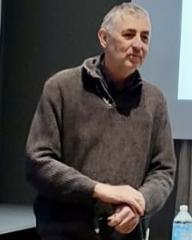
Laurent schmidt
Dire quelque chose, sur la peinture de Thierry Diers, c’est ensuite dire autre chose. Non que l’on puisse tout en dire, mais plutôt parce que, après en avoir parlé, il y a encore quelque chose à en dire.
De même qu’après avoir vu un de ses tableaux, on se dit qu’il y a encore quelque chose à peindre, et même, encore plus de choses à peindre.
Et ce n’est pas la moindre des lumières de cette peinture, qui tourne le dos aux affirmations et aux propositions définitives, préférant aux conclusions glacées, la libération jaillissante du désir de peindre, et provoquant en retour un inextinguible désir de voir.
Désir qui se soulève partout sur le tableau, désir qu’aucune composition ne parvient à organiser, comme un ensemble d’éclosions simultanées.
Et si ce désir, curieux, bouillonnant, convoquait un commentaire, ce serait pour immédiatement le dépasser, pour l’emporter dans son mouvement, le faire entrer dans sa danse.
On pourrait par exemple essayer de saisir les tableaux de Thierry Diers à l’aide d’une généalogie : cette teinte apaisée, ce geste, ou cet élan, quelle est leur origine ?
Chez les pairs, Yvan Theys, Roger Raveel, Eugène Leroy ? À Ostende, chez James Ensor ? Chez les frères américains, Adolph Gottlieb, William Baziotes ? Dans la biographie de Thierry Diers, ses expériences, ses épreuves et ses sentiments ? Sans doute, mais aussitôt cette tentative de retrouver la racine et le parcours des formes se révèle vaine.
Car ces peintures ne sont pas des assemblages de formes, qu’une grammaire idéale ordonnerait selon des règles, des dispositions, des systèmes, qui en relateraient le discours. Elles sollicitent davantage une génétique qu’une généalogie, parce qu’elles mobilisent davantage des forces, qu’elles n’énoncent des formes.
Les faits de peinture, cet a-plat bleu vibrant par exemple, ne font pas image. Ils participent, au cours du travail de peinture, à la rencontre de mélodies et de tempos, qui explosent de leurs propres étonnements. Si bien que ce que peint Thierry Diers n’est pas un a-plat bleu vibrant, mais plutôt la vibration bleue d’un a-plat.
Et pourtant cette peinture n’appartient pas à une esthétique informelle, qui laisserait penser qu’un tableau n’a pas besoin d’un peintre pour apparaître, ou que celui-ci n’est qu’un intercesseur discret. Cette vibration bleue, Thierry Diers la peint : cette vibration bleue est la couleur d’une volonté.
Les évènements visibles sur les tableaux se jouent dans une mise en scène nourrie par une mémoire et projetée comme un aria, une mise en scène des apparitions, qui donc est une mise en temps.
Cette vibration bleue pourrait en effet se ternir, se ternir puis s’éteindre, si Thierry Diers n’en peignait pas aussi la réitération. Dans nombre de ses tableaux, le dépôt d’une couleur se produit et se reproduit, introduisant toute une variété de présences dans un même bleu. Une variété et donc une durée, comme une intime durée du bleu.
Or, à vouloir saisir l’épaisseur du temps, la peinture tombe aisément dans les élégances, affichant tout un catalogue de nuances subtiles, toute une suite d’éclairages, toute une surface d’effets, désignant ainsi le temps comme une succession linéaire, une phraséologie.
Le temps, ici, quel paradoxe, creuse et élève : mine et montagne en un seul pays, brume du Borinage et céleste Victoire !
Des dessous transparaissent au cœur des couches de peinture, non comme d’habiles effets de révélation, mais comme un corps, peau fine et tendue, aux muscles irrigués, chauffés, rougis par les palpitations d’une respiration cadencée, par l’os profond, par le nerf.
Les tableaux de Thierry Diers témoignent d’une relation au monde réciproquement agitée. Un mouvement de retenue, une brève réserve engendre une représentation intense et cependant fragile. Des visages observent avec dètermination un chemin qui les invite et les inquiète. Le ciel se détrempe sous le sable sec, les mains sont dos, têtes, masques, et le sommeil sang blanc.
C’est, ainsi réitérés, que les faits de peinture sont sans fin régénérés. Si Thierry Diers revient sur un moment de vie ou de peinture, c’est précisément pour s’assurer de le garder en vie, pour s’assurer que devant notre regard, ce moment demeure, offerte dans la langue d’un peintre de la famille des hommes, une parfaite surprise.
Laurent Schmidt
À Meschers, avril 25

/
/
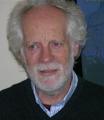
/
L
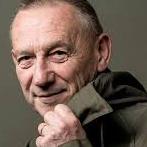
Yves Michaud
It is said of some that they are a ‘painter’s painter’. I will not say this of Thierry Diers: he is an artist for the nuanced gaze.
The fine layers and glazes of Diers’s paintings form a strange surface: unimposing yet imbued with symbols, imagination, reverie and phantoms.
Diers is not a linear artist, even less of an art-machine (Maurice Fréchuret’s book on the subject - La machine à peindre - comes to mind).
My remarks, as such, are not linear: they are annotations reaching out like points of a star traversing his 2019 paintings and drawings, chosen for this exhibition.
To begin, for there must always be a beginning, let’s commence with the most evident: these are abstract works, though of an unusual sort — an abstract painting and some abstract drawings formed of almost indistinguishable symbols, little matter and almost no trace of a gesture, except for a few drips of paint.
I say, ‘of an unusual sort’, as abstract art continues to thrive yet through particular forms. Today, it is very attractive, very aesthetic, magnificently decorative, nice colours arranged with precise techniques varying artist to artist. In its most intellectual and cynical form, this abstraction is decorative and mechanistic, decorative and mechanical — indeed the mechanic could even have been an assistant. Diers, however, practices a profoundly personal abstraction, embedded with symbols, reverie, memories and reflections — a poetic and dream-like abstraction — neither rambling nor extravagant, even less so surreal, nothing forced nor demonstrative.
One has the feeling of recognising these paintings, though once the search for resemblance begins; the references we already know prove insufficient. It comes to me in two-dimensional imagery: a resemblance to the ‘Signes’ paintings produced by Tal Coat in the 1950s. If I say, ‘in two-dimensional imagery’, it is because we have come to perceive works only through their reproductions — deceiving us completely of their real, physical state. In reality, Coat’s paintings are thick with paint, yet Diers himself is no ‘matterist’. There is no impasto. There is lightness. The canvas is neither overloaded, nor stiff, nor cemented —yet it is resolved and strong.
This calls into question: when does Diers consider a work finished? Perhaps when a composition reaches harmony, but this differs with each one. Harmony is born once the last marks and those buried beneath cease to impose themselves: when a just balance is established between the upper and the primary surface, between the top layer and all that exists in its latent state. I am reminded of two paintings by de Kooning: Attic (1949) and Excavation (1950). Here again, the resemblance is deceiving. Upon viewing these works in the flesh rather than over the internet, we realise how terribly compact these paintings are, as much as in regard to their frames as in their depth: tightly framed, jam-packed. There is nothing of the sort in Diers’s work: they float without drifting away. Fixed but not sealed. A backdrop of markings with a surface that floats above without oppressing or enclosing it.
The palette? Born in Dunkirk: Diers comes from a world of blues and sombre greys, deserted beaches, the elusive colour of the ocean, of veiled lighting - dim and enveloping, the sun never breaking through. Painters never escape from the imprint left by their primordial experiences of colour, whether they be natural or pictorial. Diers carries his Flemish roots with him. In Paris, his colours did not darken: though they were subdued by the lack of external freedom and invigoration so required by an artist.
A recent re-location to the South Atlantic coast has changed many things. The light has returned and the sun is present, with yellows and oranges — yet still veiled by a mist. At times, I am reminded of a painting by Bonnard perceived through a sea fog — though without anything of the South of course. Another reference presents itself: Turner and his seascapes bathed in the light of his fiery sunsets. Today, such gravity remains, though it has become luminous. Turmoil is certainly present, though serenity triumphs without stifling it.
Diers draws a lot, everyday: producing studies for his paintings, but not exclusively. Certain drawings are very large. We can see sketches for larger works — Diers trained as an architect and is familiar with the drawing as disegno — but they are works unto themselves too. Certain elements or structures reappear in paintings that re-appropriate, rework and reinterpret that which has appeared in the drawings. Paper does not withstand heavy layers of paint, only soft strokes of colour. Instead, he mobilises a system of division and spatial organisation, based on the multiplication and dissemination of focal points. What in the paintings is achieved through an equilibrium between the deeper elements and the surface, is achieved in the drawings through the teetering balance between lines, scores and divisions – relying on the grace of neither illustration nor colour – or at least very little.
As for the symbols themselves? According to ones’ own sensibilities, each individual will see that which speaks to their own sensitivities and their own unconscious: people, letters, a heart, a man falling over...who knows what else. No particular resemblance is intentional. For Diers, they are perhaps ideas reoccurring like a refrain, though for the viewer they are essentially material markers breathing life into, animating and supporting the surface.
I nearly forgot: the colours have softened. Thierry Diers admits his fascination, as an architecture student, with the forms and colours found in Italian Anti-Design, notably in the work of Ettore Sottsass Jr and Andrea Branzi. Perhaps this explains the presence of certain forms and the softness (though never bland) of his colours. Its more implicit legacy can be seen in the joys Diers takes in breaking from the rigidity of rules and expectation, towards the tranquillity of spirit that settles in, when the painting itself takes the lead.
Yves Michaud, 12th October 2020.
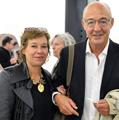
/
/
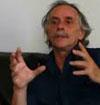
Daniel Dobbels
Dessins sensibles le temps acceptant de se distendre, à une « clause muette » qui n’exclue ni n’interdit rien, si ce rien n’est pas mortifère. Ils donnent à voir et à comprendre qu’aucun de leurs chapitres ouverts n’est destiné à se refermer brutalement et clos avant l’heure. Il y a en eux un droit gagné – élaboré depuis des années – qui pourrait se définir ainsi : celui d’avoir droit ou, plus justement, voix au chapitre. Non pas pour élever la voix et céder à l’amplification d’une clameur qui serait restée sourde, conduite dès lors à devenir elle-même assourdissante, mais pour faire part d’une complexité vitale, où chaque rapport pour se nouer doit surmonter une faiblesse d’être inimaginable, faire preuve d’une subtilité, d’une attention, d’une circonspection exacte. Chaque dessin est, ici, soucieux de ne pas céder à la puissance d’un dessein, à la tentation d’un destin. Il conjure l’emprise.
Il ne procède que de la plus ancienne vigilance (l’enfant en détient le secret) veillant à ce que les choses se passent et naissent, s’étreignent et s’écartent, suivant une profonde loi du libre-échange. Attention élémentaire qui mûrit avec le temps mais ne vieillit pas et ne s’enkyste pas. Avant même que le nom de « liberté » soit prononcé et écrit (et quand cela advient, Eluard le savait, il est déjà trop tard : le pire s’est produit), il flotte, se teint, se restreint, s’étend légèrement, insiste peu, se greffe sans blesser, se sent aimé de la visibilité et, ainsi, se déploie en un milieu favorable. Avènement qui n’est pas d’hier, mais jouit du présent qui se dépose en lui et – miracles discrets – lui expose les chances nouvelles (liens, métamorphoses, fluidités, concrétions heureuses, structures d’entente) qui se tenaient là où nul a priori ne pouvait apparaître comme dominant.
Thierry Diers tire ses lignes (et les formes qui s’y figurent, s’en distinguent, s’y replient ou s’y nichent, s’en éloignent et prennent corps) d’une mémoire que les temps refusent de circonscrire. Les morts d’hier ne sont pas jaloux des êtres qui viennent vivre sous ses yeux et d’entre ses mains, une existence qu’ils savent fragile mais inespérée. Veillerait sur elle cette « voix de l’enchanteur mort » (Merlin) à laquelle Apollinaire fait dire : « je suis mort et froid. Mais tes mirages ne sont pas inutiles aux cadavres ; je te prie d’en laisser une bonne provision à la disposition de ma voix. Qu’il y en ait de toutes sortes : de toute heure, de toute saison, de toute couleur et de toute grandeur… « (« L’Enchanteur pourrissant », éd. Poésie/Gallimard, p.29). Sans oser vouloir hausser le ton (la musicalité des dessins de Thierry Diers en serait affectée, elle qui semble s’entendre en demi-teinte, pour ne jamais être étouffée), on serait tenté pourtant d’ajouter aux vœux de Merlin : de tous les mondes. A la condition que ceux-ci ne soient assignés par aucune frontière, ne soient limités par aucun état ou domaine tenu de main de maître par l’on ne sait quel propriétaire forcené. Les œuvres que l’on découvre et qui s’offrent à notre regard sont migrantes, de passage, limitrophes mais essentiellement apatrides; les lieux qu’elles visitent se situent entre le monde des vivants et le monde des morts, mais elles témoignent d’une attention pour tous. Elles sont, mystérieusement, utiles. Elles exaucent (exhaussent aussi, sans jamais prendre les faits d’apparition de haut) une attente et une errance que l’effroi ou la peur ne contraignent plus. Fin des intimidations, fin des humiliations, fin des espoirs de conquête assassins. Une liberté de ton merveilleuse (elle n’est exempte d’aucune inquiétude, reste soucieuse des tremblements qui pourraient la secouer ou la menacer) déploie ses interrègnes. Elle se fait l’écho (parmi tant d’autres possibles approches ou résonances) de cette autre parole de l’enchanteur : « Ô riche voyageur, je suis incirconcis et baptisé, et pourtant j’ai été à Jérusalem, mais par d’autres chemins que le chemin de croix, et j’ai été à Rome par d’autres chemins que tous ceux qui y mènent… ». L’impression donne à rêver : toutes les voies tracées dans chaque dessin, fussent-elles seulement indiquées, esquissées, ou encore liées à un temps T, sont des issues, trouvées sur toutes sortes de continents. Leurs visibilité provient, la plupart des fois, des marges non tracées où les forces encore à venir semblent latérales, comme si Thierry Diers laissait advenir le moindre événement notable d’un à côté (d’un point du temps et de l’espace où la lumière n’est jamais aveuglante mais propice aux nuances d’être les moins comprimées, dégagées de toute forme d’oppression). Ligne de partage de stricts égards : ce qui (se) passe sous nos yeux est d’hier et d’aujourd’hui. Les traits qui en émanent sont souverains et joueurs… Nulle clause à remplir pour en distiller les accords suivant ses propres rêveries.
Daniel Dobbels – Paris, février 2017

Lydia Harambourg
Dedans-dehors, proche et lointain, ce jeu alternatif qui anime toute la peinture de Thierry Diers s’est affirmé dans ses œuvres récentes. La simultanéité des plans coulissants qui, tour à tour, cachent et dévoilent une composition abstraite, s’accompagne ponctuellement depuis quelques temps de papiers collés.
Une dynamique nouvelle introduit une respiration de la toile dans une perspective étagée. L’espace se dilate, la peinture impose ses splendeurs matiéristes avec la technique de l’huile dont l’artiste tire parti. Des zones colorées dialoguent avec des espaces dépouillés.
Le peintre revendique des affinités avec l’expressionnisme flamand dans l’héritage d’Eugène Dodeigne, d’Eugène Leroy et d’Yvan Theys. Sur les traces de Vang Gogh, dont il reprend le parcours géographique lors de sa formation, Thierry Diers peint alors des paysages qu’il qualifie de « figuration déguisée ». Priorité est donnée à la couleur au service de la nature non plus représentée, mais interprétée sur un mode poétique.
En peintre du XXIème siècle, il a aussi regardé du côté de Pollock et de Cy Twombly. L’écriture devient l’alliée d’une peinture intensément vécue de l’intérieur. Les lignes fragmentent un territoire où s’entrecroisent formes et couleurs généreusement ouvertes jusqu’à sortir du cadre reprenant le all-over des peintre outre-Atlantique.
Cet artiste, qui construit avec la couleur, attend de la peinture qu’elle soit une composition musicale, interprète de nos émotions secrètes.
Lydia Harambourg, La Gazette Drouot, juin 2016
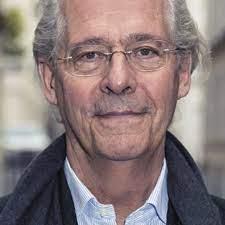
Pascal Ordonneau
Thierry Diers est un peintre inscrit dans son temps avec talent et imagination. Ouvert sur le monde, il est tout autant dans la mouvance française des Cobra que dans l’univers inspiré des Allemands contemporains que sont Baselitz, Lüpertz et quelques autres.
Faux abstrait, sa peinture est d’ordre émotionnelle. Il a recours aux collages, au surcollages, pour renforcer le discours de la peinture. Les œuvres exposées, à dominante bleue, ne doivent pas faire oublier qu’il s’agit très généralement d’une peinture colorée, comme on en trouve chez les Cobra « classiques », comme on en trouve aussi chez des Français comme Arnal ou Wemaere.
Peinture sûre, main et pinceaux précis, Thierry Diers est un de ces artistes qui font passer les messages. Peinture qui rappelle et interpelle, l’abstraction n’est pas pour lui formelle ni lyrique, c’est un discours construit. L’expressionnisme n’y est jamais grinçant ou provocateur et si on veut y découvrir un sentiment c’est celui qui entoure le désir d’acuité et de vérité qu’il faut chercher.
Le travail de Thierry Diers est intéressant au sens où ses œuvres offrent au regardeur la chance de réfléchir, d’y lire des questions et de voir un artiste qui ne s’arrête pas en chemin, une fois la bonne idée, la bonne expression trouvée. Cette période bleue est intéressante. Elle est bien dans le droit fil du travail qui se déploie sur une bonne quarantaine d’années.
Un bon peintre à aller voir et à collectionner.
Pascal Ordonneau – Mai 2016
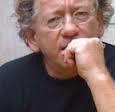
Pierre Bongiovanni
J’ai traversé l’atelier parisien de Thierry Diers à Paris il y a quelques mois. Des centaines de toiles sont là stockées et endormies, éloignées des regards. Je lui ai conseillé de s’en débarrasser au plus vite, conseil avisé, mais inutile, pour finalement rester en arrêt devant la dernière peinture réalisée et encore fraiche. Aligner des mots et des phrases au sujet d’une oeuvre est une tentative de faire conversation entre soi et soi, entre soi et lui (l’auteur du forfait), entre soi et d’autres (qui la découvriront, plus tard, peut-être). Autant dire que cela ne sert pas a grand-chose, raison de plus pour ne pas s’en priver.
Cette toile date de début 2015. Nous approchons désormais de la fin de l’année. Je ne sais pas à qui il pensait alors.
Je sais à quoi je pense aujourd’hui en la regardant.
Cette fin d’année 2015 avance vers sa fin, fourbue par les tourments et les doutes. On verra bien si quelque chose de digne apparaît au-dessus des ruines.
Je regarde cette peinture.
J’y vois la dislocation des drapeaux, des discours, des territoires, des peuples.
J’y vois la vanité des guerres, l’inutilité des massacres, l’impossibilité de trouver un fil conducteur, une raison, un semblant de pensée à l’incontinence informationnelle des médias et des réseaux de communication. La peinture sert aussi à cela : permettre de se déporter soi-même à côté du flux.Des avions bombardent villes et villages. Des ruines s’accumulent. Des murs s’érigent. Tous les continents dérivent en même temps. L’instabilité est générale.
Rien de neuf.
Ce qui serait nouveau serait la beauté universelle, l’harmonie sur terre et l’ennui comme horizon. Grâce à au génie de l’homme-ogre tout ceci nous est épargné. Reste donc a se coltiner le réel. De ces dislocations tout et pas seulement le pire peut advenir. C’est aussi de cela que parle cette peinture.
Il ne s’agit ni d’une apocalypse, ni d’une implosion, ni d’une explosion, même pas d’un drame. Juste une épopée qui part en quenouille, comme un pantin désarticulé dont chaque fragment peut encore témoigner d’une splendeur passée, mais dont l’ensemble est rendu informe par la tectonique des tourments.
Pour des raisons mystérieuses et qui échappent à ma capacité de les analyser, cette toile fonctionne comme une «machine» d’énergie dont le trou blanc central redistribue et renouvelle sans fin les formes et les attributs chromatiques qui l’entourent.
Ce vortex virginal, mais souillé autorise l’espoir d’une refondation autant que la confirmation d’un effondrement sans fin.
Ceci sans aucun pathos.
Sans aucune intention.
Sans aucun projet.
Sans aucun message.
Et c’est précisément à cet endroit que l’oeuvre, «à mes yeux», trouve sa place dans ma cartographie symbolique du jour.
A la question générique du moment, «que faire ?» répercutée de réseau en réseau, de conversation en conversation, de doute en cauchemar, la peinture réponds : touille, malaxe, rumine, dissous, creuse, mélange, «moque-toi du drame du destin», libère-toi de tout en commençant par te libérer de toi-même.
Par là, nous accédons à une forme d’éternité tranquille, cosmique, un peu comique aussi.Je suis resté très longtemps devant cette peinture. Il m’arrive aussi de rester longtemps devant un brin d’herbe ou en conversation avec un nuage solitaire. J’imagine que les nouveau-nés, les mourants, les drogués ou les fusillés au moment de la salve doivent aussi voir ce genre de choses. C’est parce qu’ils nous privent de ces merveilles que les politiques, les idéologues et les experts et les journalistes pressés nous sont parfaitement indifférents.
C’est parce que des gens continuent à faire des taches blanches et sales sur des toiles maculées des visions en désordres qu’ils nous sont nécessaires.
Ceci étant dit, nous sommes le dimanche 13 décembre 2015 et je m’en vais voter.

Nicolas Xavier Ferrand
AN INNER REMOTE BACKGROUND
When Thierry Diers entrusted me with the writing of a text for this present catalogue, the idea of establishing parallels with artists whose way of painting reminds me of his own came rapidly to my mind. With a painter whose practical experience has been going on for 40 years, whose style has considerably varied during decades and whose work refers to a multi thousand-years-old discipline, the task is arduous. What to choose? Then the assumed title ‘Wandering of a writing’, has been of great help to me. How to describe better the relationship Thierry Diers develops with the history of painting, he who has borrowed, in a disorderly and erratic way, from three generations of expressionists, coming from as many different areas of the globe, and even beyond it?
Thierry Diers’s path, although atypical and strictly personal, is also an invitation to travel to meet a whole breed of artists for whom the canvas is an ‘arena’[1], where inner and violent feelings, but also profound and universal ones, express themselves.
Is it a coincidence if Thierry Diers has grown up in the same geographical area as the first of the expressionists, Vincent Van Gogh? In the paintings of both of them one can find the same hunger for colours, the same way of altering concrete nature into emotional signs. As far as colour is concerned, Thierry Diers has known the answer for a long time. Those who have paced up and down the Northern beaches have probably also guessed it. In Dunkirk, where the artist was born, the grey of the sky merges with that of the sand and the horizon sinks into this indistinct monochrome. The inhabitants did not need to meet Malévitch to know the definition of a monochrome. Over there, there is neither up nor down anymore, neither North nor West anymore, physical landmarks are only language conventions. The result is not a revelation of the immensity of nature but rather the starting point of an introspection. As the eyes cannot hear anything, the spirit has to make it clear – here begins any good expressionist quest.
It is also the starting point of a vision of colour. In a grey world, the latter is not descriptive any more but inevitably poetical, and, to quote and do violence to the poet, the northern painter has got in his mind the blue colour he has not got in the sky since the colour has not such a physical existence, anyway not so far: one has just to look at the aesthetical shock most of the painters of the end of the19th century & the beginning of the 20th century underwent when they discovered the light of southern France – down there Vincent became Van Gogh and Matisse and Derain changed into ‘Fauvists’ and have been the first ones to have launched the avant-garde adventure. Thierry Diers did not wait to discover the South to tackle the colour. His birth to painting occurred on the other side of the century at a time when these data were already quite set up in the history of Art. For an expressionist painter like Diers, colour has straightaway a symbolical and psychological worth, and forms, even when they roll on the edge of figurative painting, are always strongly interiorized.
It is quite important to notice that the use of colour is not a linear one with the artist. The end of the 1970’s and rather the 1980’s and the 1990’s have experienced a quite systematic use of cold and deep shades. One need to wait till the 2000’s (and a certain maturity of mind, a stability?) to be able to see the palette light up and free oneself. But let’s go back a few years behind.
BEGINNINGS
It is on the other side of the frontier, at Saint Luke’s school in Tournai, in Belgium, that Thierry Diers’s vocation as a painter became obvious. The network of Saint Luke’s institutes is a specificity of the country, a series of catholic schools devoted to the artistic training of young people, for which local artists are in charge. There, technical teaching is solid but the young Diers is above all impressed by the exemplarity of his teachers: his workshop master, Yvan Theys, but also by those who, like Leroy and Dodeigne, moved around the school; all of them gave him models of men who were both gnawed and nurtured by painting, of which they knew the history to the tip of their brushes. Theys is sailing between cubism and expressionism, between South and North, a perfect combination for a French man living near the frontier. If Theys is a more figurative artist than Diers, the first one shows the second one how the distortion of a face allows to reach emotion, and how the painting is just as well concerned by the relationship between the components of the picture as by the expression of a certain psychological state of mind.
Thierry Diers, the ex-dunce when on the benches of the ‘classic’ school, was in good hands and found his way. He was even selected for the Belgian equivalent to Villa Medicis. Yet his father advised him to complete his studies in architecture (‘a real job’). We were in the middle of the 1970’s.
At that time, Thierry Diers was wild with his teachers’ training and with all these wonderful Flemish painters he met in the museums of his region: Rubens, Rembrandt, Van Gogh, Ensor, Raveel, Spilliaert, the list is endless. However close to the Flanders he was, Diers remained a French man and a French painter ends, sooner or later, to go to Paris: the magnetic ogre. At that time when he was a figurative painter, he started again to paint landscapes which were more and more psychological: the maid’s room which he used as a workshop had no window, thus his work was purely a mental one. And then, the shock took place.
THE MOST AMERICAN OF THE FLEMISH
In 1982, Thierry Diers visited a retrospective devoted to Jackson Pollock. Protected until then from the American influences of the last decades, the young painter was deeply upset by these huge all-over canvasses, which were a jumble and pervaded with a new style. The paintings of the following months and years bear Pollock’s mark. Then he came across other abstract expressionists: Robert Ryman, Cy Twonbly, Philip Guston, who will, each of them, have a long-lasting influence on his work. Thanks to their help, Diers swung into abstraction or he rather slid between figuration and non-figuration towards this latter – Diers speaks about ‘disguised figuration’ about his work.
After finding a local mooring and having taken place in some sort of tradition of Flemish expressionism, Thierry Diers discovered his American cousins who are above all temporal brothers. Indeed, if Leroy, Dodeigne, Raveel and Theys are still alive and active at that time, Flemish expressionism as a movement dates back to the beginning of the century whereas its American version creates explosions in the world of art with Jean-Michel Basquiat at its head. When Thierry Diers turns up in Paris, painting in France seems to be reduced to Combas and Di Rosa, in whom he does not recognize himself very well. This primitive painting which refuses the heritage of French and world-wide painting in its full breadth, does not appeal to this painter who, on the contrary, wishes to pace up and down this rich history and sometimes be confronted with it.
Let’s be quite clear on this thing: Thierry Diers mistrusted the schools as any artist of the end of the century should do but his encounter with abstract expressionism probably coincides with personal needs which only a particular style can fulfil. Abstract expressionists have experienced the same path, as Irving Sandler underlines it:
‘Reacting against World War II and the intellectual climate it has created, the future abstract expressionists had come to believe they were confronted with a crisis of subject. The prevailing ideologies – socialist, nationalist and utopian ones – and the styles which gave them their own identity – social realism, regionalism and geometric abstraction – were no longer credible in their eyes. Unwilling to stay in the beaten tracks or to accept any dogma, those artists, in an anxious search for new values, had turned towards their own visions and intuitions. An urgent need of meaning more genuinely linked to their experiences had given birth to new ways of seeing – definite innovations in shapes’.[2]
What Kandinsky found at the beginning of the century and what Pollock and Rothko developed, Thierry Diers experienced it himself: this desire to express powerful inner contents which goes necessarily through abstraction. Motherwell speaks best about it: ‘Their way of reacting towards modern life…rebellious, individualistic, nonconformist, sensitive, emotional…was the expression of an existential uneasiness…No innovation as drastic as abstract art would have been born without the most profound, implacable and insatiable need. The need for an actual, intense, instant, direct, subtle, absolute, warm, vital and rhythmic experience’.[3]
Yet this abstraction needs to keep an important element if it wants to fulfil its mission of indenting the human soul with a scalpel: a kind of frailty, uncertainty, in a word, ‘the human factor’ which prevents the drift towards geometric abstraction. Thierry Diers and the abstract expressionists ‘were trying out unstable, indeterminate, dynamic, open and uncompleted shapes, using directly the medium-painting’s strength of expression to suggest the artist’s particular creative action, his creative presence and his nature.’[4]
By discovering post-war American painting, Thierry Diers helped himself to a multitude of plastic solutions which came to enrich his plastic vocabulary. Theys’s fruitful post-cubism was overtaken by the all-over from across the Atlantic. Thus the picture, and not only the motif any more, became independent. Then the canvas was not received as an analysis of the visible any more but as a total sensorial and psychological experience, the onlooker being caught into a rhythm of lines and springing up of colours. The abstract expressionist heritage is clearly expressed in this chromatic and almost musical organization, and in these obvious body movements: a sign of the painter’s passing through.
PHYSICAL TRACE
Thus Thierry Diers’s paintings carry on with the imperative Van Gogh found and which Americans have so well made the most of. Van Gogh did not satisfy himself with painting whirls in the sky of his Nuit étoilée. One can see the mark of the brush, it passed through without any doubt. It is not only a matter of perception of a town by night through a disturbed mind but also of the pictorial expression of all that. So the mark is as much physical as mental. Pollock brings the combination to its utmost height: its dripping is a ritual dance above the canvas (Diers sometimes uses a similar process) which is as much the sign of a certain mental state as that of the artist’s body. Some of the artist’s canvasses reflect it in an exemplary way. One can think in particular of the paintings entitled Ballade and Tranquille (2012). Generally, Diers’s technique illustrates this will quite well. The artist works ‘in thickness’, adding layers of paint, neither ‘scratching’ nor removing anything. He always works by adding something. The errors, the wrong ways – or more exactly the roads leading to success – are simply covered up. Diers cares a lot about this materiality, taking up in his own way Andy Warhol’s so true assertion according to which everything – the artist, the work – is to be found on the surface of the painting and not in an assumed depth, a quotation Diers enriches in Bertrand Lavier’s way who was adding that everything is standing ‘in the thickness and in the way of painting’. For Thierry Diers, this mass of pigments conceals the history of the work but also the message of the painting…an element we can find in another abstract expressionist painter, Philip Guston, who, for instance, expressed the passion he felt for his wife in For M by a concretion of red paint at the centre of the painting.
THE DEPTH IN THE SURFACE
This thickness of the layers of paint does not for all that mean that perspective must be seen in it. In Thierry Diers’s paintings, there is so to speak hardly ever any. This is once again an element which sets him apart from many European expressionists, but which brings him closer to the Americans. The planes of the painting, with Thierry Diers, overlap one another but are seldom put in a hierarchy. The perspective in them is set out in tiers or symbolical (as it is with Asiatic painters), the whole is always frontal. Depending on what you feel, the canvas either rushes out on to the onlooker (for instance: Sans Titre, 2013, n°23) or it sucks us up (for instance: Sans Titre, 2011, n°2011-d11). In any case, Thierry Diers has very well learnt the teaching given by all these painters who wished to move man in the very depth of his soul. In the very spot where the Euclidian perspective enables the eye to enter the canvas, a flat work immediately stops the course of the sight, and brings it back to its origin, that is to say the onlooker himself. In other words, instead of sinking into the ‘illusionniste’ depth of the painting, the eye bounces up upon the surface of the plane and does the opposite process. If a journey is at stake, it can then only be a mental and psychological one.
UNKOWN COUSINS
Paradoxically, the two abstract expressionists whom Diers is, plastically, the closest to, were unknown to him until recently and thus cannot have had any influence on his work. Here I’m speaking about Franz Kline and Clyfford Still. With Kline, one can find these big coloured surfaces scattered all over with white areas and crossed with powerful lines. Visually, the works which are exhibited here are contemporary cousins. Still does not appear much in the selection, it is more a question of an overall feeling.[5] It is mainly from the point of view of the state of mind that Still’s ghost hovers above Thierry Diers’s work, the American considering painting as a pioneer’s journey on a mythical land:
‘It was a journey one had to do, walking straight ahead and alone…until one reached after dark and devastated valleys a high unlimited plane, in the open air. Imagination, now free from the laws of fear, merged into vision. And the Act, intrinsic and absolute, became her meaning and the support of her vision’.
Such words which Diers could have uttered himself.
COLOURS
From a general point of view, even if ‘action painting’ is mentioned at times in the artist’s work, it is much more the ‘colorfield paintings’ that have been getting the upper hand for a few years, the canvasses which allow to see the appearance of coloured clouds (for instance: Sans titre, 2014, n°2014-d19) enable us to note the idea that here the artist dissolves his conscience in something bigger than he: a universal emotion, a relationship with time, a state of the world…[6] according to him it is the first time he has let the matter work like this, that he has placed himself in the service of liquid pigment, which is free to flow where it wants to. This harmony reminds us of Rothko. It is interesting on that subject to notice to what point the works which have been chosen for the exhibition are colourful. A person who is familiar with the work of Thierry Diers will perhaps be surprised: actually, the artist used mainly cold shades, heavy ones, particularly architectonic, which are used as building blocks inside the plan. Since the end of the years 2000, much more vivid colours have appeared. An expert eye will have seen that all the different shades of blue are here. The famous blue which was missing both in the sky and the sea of Dunkirk? A lot of his paintings have been done in the artist’s country house, at the seaside. The fact that this exhibition also takes place close to the water will have in so far bent the course of the choices. However that maybe, the use of variations around lapis-lazuli offers a new subject-matter for reflection. According to symbolics, blue, which is the colour of the sky and of the sea, is like one of the elements to which it is bound up: associated to the infinite, to the beyond since the sky as well as the sea are realms which are forbidden to Man by nature. In a roundabout way, blue is the colour of the unattainable world, that is to say the world of Spirit – that is why we can find it on the cloak of the Virgin Mary. That is also why Kandinsky covered up his famous horseman with blue, the herald of man’s journey from the earth up to the ether, the very symbol of the spiritual quest. However astonishing as it may appear, it is the pink clouds that put an end to the whole, a sign for a new opening in Thierry Diers’s lexical field which is always in a turmoil.
CONSTRUCTION
However important colour may be, construction is not outdone. Quite a few canvasses are streaked with lines (Il s’envole, 2010), with grids which are fiercely plastered over the motives or well interwoven with them (Note, 2012). One has sometimes the feeling that the work appears to us from behind a bamboo wood or a moucharabieh (Ca bouge, 2010). Maybe it is because Thierry Diers has finally forgotten nothing of Yvan Theys’s example, whose canvasses always display a very strong structure, often staged with the help of a framework. Maybe it is also and certainly Diers’s other activity which leaks out light on theses canvasses: ‘in town’, the artist is also an international architect and achieves a lot of plans together with his painter’s career. The person who is lucky enough to visit the artist’s workshop will see a lot of drawings and sketches cast upon old plans. No doubt this obsession about the building has contaminated the painter’s work who in fact is also turned as well towards the edification of precise relationships between the elements of the painting – one can notice that for the architect as for the painter, the surface of the work is called the plan. As though Thierry Diers was really trying by all means (the physical as well as the symbolical construction – but are not they in fact one and the same thing?) to link between one another the smashed elements of the world, and to find again the primeval unity?
However that may be, we can find again Theys’s dichotomy in this strong longing for construction between Flanders and the Mediterranean, with which the American influence is here mingled, the influence to which Diers was subjected 30 years ago. The Americans, in the all-over, strove after countering composition in the European way, either centrifugal or centripetal – but always centred, deliberately tripartite, triangular, …but Diers, as for him, did not yield up anything from his French heritage. Even if the canvas is well painted in all-over, it is built as carefully as possible. The longing for building is so strong for the artist that at times, colour is only used for this purpose (Plein été, 2012). Even when the pink clouds appear, they remain framed by pieces of adhesive-tape skilfully fixed (Sans titre, 2014, n°2014-d19), which are here to orchestrate this chromatic rhapsody. Other canvasses, less colourful, seem to be odes to this new method of construction (Effacement, 2014): here the tribute cannot be more European, nor more southern: these are the stuck papers of the experimental cubism of Braque and Picasso, a time when European painting soared up, when these two painters are precisely obsessed by the building of the plan.
‘INNER REMOTE BACKGROUND’
All these technical issues, however, pay only a historical tribute to Thierry Diers’s work. One has to hear him speak about painting, of his own paintings as well as of those of others, in order to really appreciate the nature of his vision of art. If Thierry Diers is really fascinated by the ‘scheming’ of painting (like all painters in fact), there is also a whole mysticism which is at work: with Diers, painting is a mission, a vocation, an urgency and a life companion. Sometimes it is unison, at other times, it is war. However that may be, one has to admit that the artist has got an almost holistic vision of his medium. Besides it is perhaps because of it that the porosity between his two hats, painter and architect, can be explained. When Thierry Diers enters into a pictorial process, it is as though several beams shone into a kaleidoscope at the same time. It is a vibration which shakes all his being. When Thierry Diers starts pouring out on his work, it is not unusual to see him swallow his tears in the end. His honesty and his attachment -some would say his subservience- to painting as a medium is such that the phenomenon can occur when he presents the work of an artist at the Duboys gallery of which he is the artistic director. Thierry Diers lives with painting; or rather it is painting which makes him live, not in the financial sense but in the metaphysical one. Painting, that coded language, invented by the first men several tens of thousands of years before writing -and even worse, philosophy- enables him to expel his demons, his enthusiasms but also sometimes to verge on harmony. Like many abstract painters, Diers says he hears music when he paints. Similarly, he enjoys getting in touch with the paintings by touching them and by sniffing them[7]. The artist does not have only a mere optical relationship with painting. It is a fleshy, almost erotic relationship, it is as much a grief as a relief – like the sex act. For him, there is a soul in painting. In that sense, he is related to one of the most famous French artists of the second half of the past century, Yves Klein. Klein was a true mystic and a fake charlatan. When he exhibits a dozen of identical monochrome paintings and when a collector wishes to buy the third one but not the fourth one, or when he sees that the seventh one is more valuable than the tenth one, he understands it quite well. Yves Klein was utterly serious when he displayed the so-called ‘hollowness’ or when he sold his ‘zones of pictorial sensitivity’ in the guise of cheques. As for Klein, painting is above all a spiritual office, before being merely ‘a plane surface covered up with colours put together in a kind of order’ to quote the words of Maurice Denis. Painting with Diers is a plastic and sentimental event, it has already all the qualities of the ‘Gesamkunstwerk’, the absolute work of art as Wagner described it, it moves the senses of Man, but his spirit and his soul as well. Thierry Diers in fact resumes the ancient kandiskian mission, in which painting establishes a ‘communication between the souls’ thanks to a language that only the heart, the spirit and the guts will be able to decipher – much better in any case than rationality. What the artist does with his paintings is to project his ‘inner self side’, a phrase which was found by another artist: Henri Michaux, who was at the crossroads of Belgian and French paths. (…). That is the title of an anthology of hallucinated poems, among which we can notably find ‘Ma vie s’arrêta’:
‘I was in the middle of the ocean. We were sailing. Suddenly the wind dropped. Then the ocean unveiled its greatness, its unending solitude.The wind dropped suddenly, my life made a knock-knock. It had stopped for ever. It was a frenzied afternoon, an uncommon afternoon, the afternoon of ‘La fiancée se retire’. It was a moment, an everlasting moment, like the voice of man and his health smother effortlessly the moanings of famished microbes, it was a moment, and all the other moments rushed into it, snurged into it one after the other, as they advanced, endlessly, endlessly, and I was rolled up in it, buried deeper and deeper, endlessly, endlessly’.[8]
Thierry Diers paints what is in the depths of his inner self, hoping to find there what will link him up to the other men.
Nicolas-Xavier Ferrand
(Traduction: Anne-Hélène Heyriaud des Vergnes)
[1] To take up again the word used by the American critic Harold Rosenberg after De Kooning’s and Pollock’s pictorial discoveries.
[2] I. Sandler, Le triomphe de l’art américain, L’expressionisme abstrait, Ed. Carré, Paris, 1990, p. 9
[3] R. Motherwell, op.cit., p.38
[4] I. Sandler, op.cit.
[5] Some of Thierry Diers’ canvasses, nevertheless, which are not exhibited here, are surprisingly enough in profound harmony with the ‘torn up abstractions’ which are characteristic of Still, but also with the artist’s first non-figurative paintings, such as 1938 N-N° 1 in which he creates dark monoliths, dazzling suns and prehensile members, representing the human destiny in a hostile atmosphere.
[6] ‘Conscience as a leitmotiv was born from a very deep idea of oneself among the artists. Time, identity and the relationship with the world are fundamental data’ Clément Greenberg said about the artists of ‘colorfield painting’.
[7] ‘It is essential to touch the canvas’ he says. There is ‘a pleasure of the matter’, one has to smell the painting: ‘When I enter an exhibition which moves me, I visit it with my nose (…)’. He even turns his back on to the paintings – ‘and I listen to them’. J. Wetzel, Thierry Diers, Face à l’épaisseur du temps, Peinture, 1974-2014, Ed. Galerie Duboys, Paris, 2014, p.4.
[8] H. Michaux, Plume précédé de Lointain Intérieur, Gallimard, Paris, 1985.

Yves Michaud
Holy patron saints
Like the patron saints in saints’ lives, they fill the pages of reviews and magazines whose names speak for themselves – Challenges, Capital, l’Expansion, bound as they are by dynamism and their prospect. They no longer pose for a full length portrait in the old way as in the old days with Sander or after the fashion of the end of the 19th century or of the 20th century before the 1929 crisis, in the middle of a board of directors sitting round an oval table, in the comfortable club of industry captains or in the stately office of the manager sitting bolt upright in his princely seat. They have become well-known in the media, ‘people’ stars, showing off the individualistic side of a narcissist realistic portrait. In great circumstances, some of them are to be seen holding the arm of some former wife or more often of some new fashion model in the snapshots of society gatherings – for the launching of a perfume, the presentation of the new model of something, a gala evening which owns them a free performance at the opera – on the RSE managering funds.
In the old days, they used to sit for the glory of industry, of the banks of commerce and of the consecration of progress. Nowadays they sit or rather they are ‘sat’ for the requirements of communication, that of the enterprise, that of the professional trade-union and above all their own communication. They become slightly self-conscious figures or portraits for ‘career’, ‘appointment’ or ‘for ascending or declining managers columns’.
Thierry Diers undertook (that is the right word to use) to devote a whole year to a series of paintings of all these top managers and such an undertaking is at variance with the styles of representation I have just been speaking about, not only because they are paintings and because they now date back to approximately fifteen years ago. Thierry Diers really undertook to paint them with what painting implies of slackened stratified time – of painting them ‘in the act’, that is to say during meetings, exchanges, interviews, private conversations, which, before or after the formal boards and councils, lead to decisions.
‘In the act’? One uses the phrase for robbers and offenders caught in the act. There is something akin to it. Not but that those concerned are offenders, criminals, mafiosi or adulterers, but it is because these top managers lead strange lives. They seldom work in seclusion, wrapped up in thinking. They never stop being in limelight. Should they wish to seek seclusion and concentrate that they would not be able to do so, so numerous are the boards, committees, gatherings and meetings which are automatically written down on their diaries by a faithful almighty head private secretary. If they happen to find themselves alone, it is during a flight, in the muffled stillness of the first class, greatly cared for by a discreet staff whom they finally get to know as well as they know their own hairdresser.They are influential men of action, who rather dislike finding themselves alone and lost in their thoughts, and above all left to themselves. They prefer exchanges, secret meetings, news they gather from counsellors, inquirers, partners, competitors, rivals, subordinate associates – but who must not be too low in the hierarchy : their natural interlocutors are their peers and at worst those who are called the n-1.
They are men embodied in travelling, exchanging and trade.
The word trade must be understood here in all its meanings. And first of all, exchanges and commerce. They are actually in trade and negotiation. But trade also implies making profit on this trade. And actually profit is what obsesses them, is a religion to them. Trade is in fact the circulation and the number of times vehicles take a track. And such is indeed their job – communication and the gathering of news which will allow them to come to decisions – or not to come to any, or to postpone them, or to deviate them and quite often, to impede them.
Behind this negotiating constellation, there is another trade, the trade on influence, not in the penal sense according to which you are sent to prison when you buy public decisions with privileges, but in the still lawful sense of an exchange of data which favours decisions. Such is the business of initiates in a world of initiates – and an initiate, as Littré defines him, is one who knows the secret of affairs.
Thierry Diers paints them right in the middle of their activities, even if their work does not look like a real one. He does not paint them as actors, not as people who are posing, but as traders, as listeners and hardly as speakers. He paints them exchanging information with one another or, more often waiting to be spoken to, or making someone wait when he is on the watch to drop in their ears a piece of information, a confidence, a piece of news, a warning, a suggestion, a good bargain. The few occasions when they are posing, are when they want to make a great show of their good mutual understanding, point out a pact, immortalize an agreement which has just been signed. After the manner of the conclaves of the Heads of States always bursting out laughing when they are coming out of a crucial meeting on ecological disasters or on a genocide.
One feels, one sees in Thierry Diers’s paintings that they know they are being watched and that they consequently ‘behave themselves’, not only because their suit fits them. They have an attitude to keep, a ‘countenance’ to have. The word ‘countenance’ is the very word for bearing, the way you behave and control yourself, the way you hide or control your inner self : feelings, passions, interest, anger, glee, desires, lust, opinions, beliefs and even ideas.
Nothing must be shown nor betrayed.
In 1925, T. S. Eliot, the American poet who was going to become English, published a 98 verse poem, The Hollow Men, which became immediately famous and still is. He has influenced writers (King and Murakami) as well as film directors (Coppola) – and painters too, especially Motherwell for a last series of paintings of the 1980’s.
In his poem, Eliot names and describes the men of our times –The Hollow Men– hollow men, models filled with straw who exchange wizened mutterings to utter words devoid of any meaning :
We are the hollow men
We are the stuffed men
Leaning together
Headpiece filled with straw. Alas !
Our dried voices, when,
We whisper together
Are quiet and meaningless
As wind in dry grass
Or rats’ feet over broken glass
In our dry cellar.”
To Eliot, the ‘hollow men’ were literally the hollow and insubstantial men of Europe’s post world war I. Yet more, they were the men of the time of mechanization, of the times when the industrial and mechanical civilization triumphed. Difficult not to associate Eliot’s poem with the notorious mechanical ballet by Dudley Murphy and Fernand Léger in 1924 or the ‘Ballet mécanique’ by the Parisian-American musician George Antheil in 1924 too and, a little more backwards, with Raoul Hausmann’s splendid work, as exceptional as premonitory : ‘L’esprit de notre temps, Tête mécanique’, in 1920, which was made out a wooden model’s head flanked by prosthesis which calibrate and standardize this ‘man of our times’.
While discovering Thierry Diers’s paintings, I immediately thought of these Hollow Men by Eliot but in a contemporary version, ‘fancy-dressed’ and ‘restrained’, with a new look ‘great suits and luxury couturiers houses. Countenance and costumes, bearing and clothes – this is what dresses their emptiness up.
A real emptiness ? It is not sure.
Diers subtly suggests that behind countenance there is not but anything, yet something held, withdrawn, repressed, something which is concealed. That is the reason why he has only kept the countenance by neutralizing the faces which remain white – not empty and unexpressive but white. Sometimes some pink or crosshatchings to suggest that below, it is boiling, cooking and burning.
Because after all, they are human beings, just like us, and we are not more privileged to be ‘full’ than they to have the misfortune to be hollow. Yet, they must not show it, they have to stay unconcerned and pleasing, or smiling with a conventional and cosmetic rictus which does not mean anything at all. They must not betray anything, neither emotions nor dissembled thoughts, nor anticipations, even less decisions. They have to show the cold and polished face of power. They hardly dare smile – but it is not a real smile, only a way of letting things glide along.
They are sorts of human models. They have become these characters. They do not even play a double game : they are just what they are when they are showing off.
Where did the idea of this series come to Thierry Diers from ?
At this point, we have to go back to the artist’s process of thought.
Thierry Diers began with an abstract painting but actually a falsely abstract one, taking out from the subject something to draw a true pictorial painting, which had its reference as a painting in itself. With him, Abstraction is always linked up with the starting point of a form, a moment of sight, but the painter withdraws from it to let painting be and not only picture. Throughout the years, he developed this work with a true purpose but there came a time in the 1990’s when it occurred to him that he had to take the artist’s work seriously by becoming an artistic contractor for good.
He then created his own company to offer a number of proposals to other enterprises – arrangements, decorations, environments, works in public spaces or when business events took place. He became a supplier of artistic proposals, dealing with his partners not as a ‘simple artist’ but as a contractor-artist. It was in the course of this new stage of his artistic process of thought that he got to meet regularly rulers, powerful business men, the heads and captains of industry.
I know from my experience (I had myself that sort of collaboration, not as an artist but as a go-between and mediator) that in the business world, artistic and cultural decisions, maybe because nobody is able to study them or take them, or because a great symbolic value is at stake (an actually excessive value compared to the concerned amounts which are peanuts in the budget of the conglomerate), almost inevitably come up to the top grades of the head office. So that the artist or the critic (today the consultant or art advisor) finds himself directly in relationship with the men of countenance and influence and thus can see and study them closely. I remember an event which would have been moving if it had not been so funny, when the ‘PDG’ of a famous bank who was about to be destituted by Tapie and a few others, keeping his self-control despite an already significant number of glasses of whisky at noon, was praising the painting of a painter who was rising to notice in front of his associates who were as obsequious as upset – some time before the imperial seat of the so called bank was mysteriously burnt with the paintings in question…
Yet, the artist or the critic will never develop a close or warm relationship with them because these men do not drop their composure even when they tint it with a hint of good-heartedness or amusement.
Therefore, Thierry Diers has regularly met these powerful men, he has been able to observe their posture and composure, their attitudes and countenance, their behaviour and restraint and, once his business adventure settled, it appeared necessary to him to express his experience in this series of figurative paintings.
These paintings are not numerous. They do not convey a meaning or denounce a condemnation or reveal a hoax. Diers wanted to account in the most accurate way for what he saw, detected and understood. He multiplied preliminary hand pencil, ink and charcoal drawings and drafts. He refused to fall into the easy criticism ‘cliché’ or that of the paintings conveying messages. Diers does not commit himself, being himself cautious, but to my mind, his work is all the more striking. Today, lots of people forget that a description is rather stronger than a denunciation, that ‘inquiry’ journalism is stronger than all the world’s leading articles. While painting his own Hollow Men, Diers goes further than those who caricature them, pretending to blame ultraliberalism or any new change of capitalism : he shows them hollow without denying their human nature.
Then, Thierry Diers has gone back to the painter’s process of thought, in the workshop where he still is. Since then he has enriched and made his figurative abstraction more elaborate. In his artist’s stubbornness as an artist who dares to operate such changes, he makes me think of a great painter of abstract expressionism, Philip Guston, who is carrying out today a complete revaluation. With Diers, the interlude of these postures of men of power is more than an interlude – it is a step within a pictorial and intellectual path, disclosing the same clear-mindedness as in the rest of the work. And that shows the strength of it.
Yves Michaud
1st October 2014

Catherine Redelsberger
C’est pour cela que l’on aime la peinture.
Pour répondre à une invitation secrète, de l’étonnement de soi.
Faut-il encore, pour que ce mystère s’opère, que le peintre offre un monde déplacé, fragile, qu’il esquisse des échappées de regards.
C’est pour cela que l’on aime voir par les yeux du peintre.
Pour être dérangé dans ses certitudes.
Faut-il encore, que le trouble du désapprendre, l’effacement des visages, la conquête des paysages révélés conduisent la main du peintre.
C’est pour cela que l’on aime sourire.
Pour vivre la complicité avec l’artiste.
Faut-il encore que l’enfance déjoue les représentations closes.
C’est pour cela que l’on aime les points d’interrogations.Pour ne pas savoir, et rester dans la légèreté suspendue sans réponses.
Faut-il encore que l’œuvre soit le déséquilibre de la quête.
C’est pour cela que l’on aime le toucher.
Pour la tentation de poser sa main sur la toile, un doigt sur le tracée d’une ligne, la paume ressentir la vibration des couleurs.
Faut-il encore en éprouver le désir.
C’est pour cela que l’on aime ouvrir les pages souples d’un livre où se donne à voir, à lire, à toucher, à improviser les sens et le sens des images et les mots de l’imaginaire des réels.
Pour rencontrer les signes des histoires, des traces, des espaces, des paysages, des objets, des totems, des questionnements, des épuisements, des portraits.
Faut-il encore pour que naisse ce dialogue que celui qui porte son regard sur les pages du livre s’offre le luxe suprême de sa porosité à l’œuvre.
C’est pour cela que l’on aime laisser ses yeux et son esprit vagabonder.
Pour respirer le temps du songe.
Catherine Redelsberger, Paris 2014
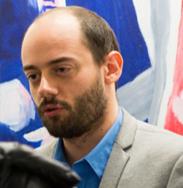
Nicolas-Xavier Ferrand
Roaring picture
When Thierry Diers, who worked with big firms, offered them to take part in the plan for an exhibition and for a catalogue on his work as a painter, a lot of them gave their agreement in principle. When the artist explained his plan precisely – its contents, its pictures, the spirit which is dwelling in it – all of them politely drew back.
What was so dangerous that so solid structures consider there is a risk to help to the birth of this plan and its pictures’ book ? Was it because they saw in it their own portrait ?
Because of these activities, as an architect and a painter, Thierry Diers knows the decision-makers. For them, he designed areas and he carried out innovatory concepts to provide humanity and sensitivity to places made for profitability, and where the walls bear the signs of human relationships whose flavour is sometimes provocative. Thierry has been a lively witness of these exchanges which take place only at work, a social arena where mocking looks, terse comments, fake greetings and true stabs in the back struggle away at you. Thierry Diers wanted to illustrate these ‘handshakes which never occur’, the disgraces, the muttered talks, … .
Thanks to this professional and human bicephaly, the ‘Hollow Men’ series was born.
The designer has been invited to attend in these buildings, to be entrusted with some mission. He said he was treated as ‘the artist’ (that is to say, in this world, as ‘the blockhead’), so that he was allowed to be admitted into the company’s private life, thus lowering their guard. He is apparently harmless : he does not hold the purse strings, does not aim at the deputy chief position and will not go and sneak to anyone what Mr or Mrs so-and-so told about another one once the door was closed. The wolves think a lamb has gone for a walk among the pack, and yet…
The architect had the painter in his pockets (unless it is the opposite), and it was more than as a passive witness that Thierry Diers observed these exchanges whose name only is human. Here Diers’s work finds its true meaning : the architect as well as the painter is completely devoted to the understanding and the expression of the building of relationships between human beings.
Thierry Diers is an abstract expressionist painter. His canvasses usually offer big bunches of colours, violently arranged on the drawing. They are sentimental, intimate and universal, they invite to introspection, emotion or to a particular physical link with the pictorial matter. They are rarely about human figures, never about politics. Yet here, the artist has felt a desperate need to depict straight away what he witnessed. The ‘Hollow Men’ series is a fault in Diers’s path, an urgent springing up which compelled a clear assertion. In the following text, Yves Michaud quickly compares Diers and the American painter Philipp Guston, an illustrious abstract expressionist. What needs to be mentioned is that Guston, before being one of the 1950’s biggest non-representational artists is then considered as Pollock’s equal, was a frenzied political painter who denounced racial and social violences, and that he turned himself back to the paths of figuration in 1970, painting racism and imperialism, declaring that abstract art, in hard times, was unsuited to speak about the world and even less than to change it. He was treated like dirt by the art critic and part of the art circle. If it is not easy to organize into a hierarchy the genres of paintings, Guston, as well as Diers, have each of them felt the urge to tell reality in the most explicit way, toning down a bit the usual and discreet purge of their means. In 2015, the pictures have kept all their strength. In January in Paris, about ten people have been killed because of pictures. At the time when I’m writing these lines, one speaks about the eviction of the ‘Guignols de l’info’. This book is self-edited whereas it should be otherwise. In 2015, the pictures have kept all their strength indeed.
Nicolas-Xavier Ferrand

Eric Simon
Thierry Diers a commencé à explorer le thème du paysage en témoignant des espaces qui l’entouraient, la ligne d’horizon de la plaine des Flandres et de la mer de Nord. Dans ses premières toiles on découvre une écriture singulière, son influence nordique et la virtuosité d’un geste sûr qui accompagne le plaisir de faire. Il refuse de se cantonner dans la torpeur de l’esthétisme, il y a autre chose à découvrir, Diers commence à explorer d’autres voies, nous sommes en 74.
Dans cette sélection de toiles, nous l’accompagnons sur les chemins parcourus et comprenons sa connaissance et relecture de l’histoire de la peinture. On découvre l’exploration inlassable et l’interprétation d’un espace qui vibre entre la toile et le sujet, interrogation vivante qui rend cette œuvre unique. TD parle d’un «Espace temps» qui fluctue et qu’il poursuit. Intuition instable qui s’échappe et fuit, qui ne répond à aucune règle et meurt s’il tente de la singer.
Une démarche éloignée de la recherche de l’effet ou d’une idée consensuelle simplement posée. TD avance et cite volontiers Georges Braque « en art, il n’y a pas d’effet sans entorse à la vérité », phrase qui tel un mantra, l’accompagne dans la lecture de toute création.
Pour Diers le paysage est le prétexte à l’introspection d’un monde, interprétation libre pour ne pas rester à la surface du sujet. Par là, il tente de rejoindre le cheminement de ses prédécesseurs et devient peinture. Le sujet prétexte à entrer dans une histoire pour « être en osmose avec la nature et ceux qui m’ont précédés », il cite Pollock et ses dripping, Rembrandt, Constable, Gainsborough, Turner, Monet, Ryman, Twombly tous ont un point commun, aller au-delà du réel.
C’est au 19ème siècle que le paysage s’affirme comme un genre en se libérant de la figure et devenir un champ de recherche pour la lumière, la matière, l’espace et la couleur. Sa représentation picturale sera bouleversée par Cézanne. Le paysage hante la pratique picturale du 20ème siècle et les historiens expliquent qu’il a fait naître l’art abstrait.
Thierry Diers parle également d’évocations musicales qui l’ont fait basculer, Mozart, Beethoven, Gershwin, Duke Ellington, Brel, Arno… Tout est lié dans ses recherches, un mot, un son, une touche et Diers surmonte le réel vers l’intemporel dans une démarche lente et solitaire, passionnante.
Cette exposition regroupe quelques toiles d’une aventure commencée dans les années 70 avec la peur au ventre, trouille d’aborder le terrain interdit du vide, celui de la création, de ne pas y arriver et l’envie immense de découvrir, envie qui dépasse et appelle. Ici, c’est un ensemble de toiles qui gardent en elles le tempo du temps, miracle de la création qui fige des moments futiles, uniques et à jamais vivants. L’histoire se bâtit simplement ainsi !
Le «paysage» est une préoccupation constante de DIERS. Pour s’en rendre compte, il suffit de feuilleter l’ouvrage présent et les deux catalogues précédents, parus en 2001 et 2010. On y trouve, respectivement, déjà un essai intitulé « Le monde est un paysage» et un chapitre «espace et paysage».
Eric Simon, Actuart
Mai 2014

Johannes Wetzel
When, together with the artist, we start on looking at a selection of his works dealing with landscape over 40 years, an expression often reappears : in his paintings he says he is searching for “the thickness of things”. It seems to convey the thickness of the painting : all of them are born from a long process of work. Coats of paint are laid upon the others, colours blend together, threaten each other, get soiled, interfere. One has to be aware of the thickness in touching the surface of the canvas which is recovered with his favourite paint, oil paint, thick and smooth : “It is essential to touch the canvas”, he says. There is a “pleasure in the material”, one has to smell the painting : “When I enter an exhibition which touches me, I visit it with my nose and tears come up to my eyes. It shines, it stirs up”. He even turns his back to the paintings – “ and I am listening”. That is how the thickness of things is rediscovered.
The artist gladly describes his method of working : he puts his marks “at the four corners”, then he starts painting, with the large and wide strokes of his brushes which characterize most of his paintings. The difference with the drawings – which “ lighten the spirit” and allow to develop a “vocabulary” – is that oil paint dries off slowly. Using oil paint obliges you to go back to the painting the following day and the day after. So there is sometimes an overbid “ of elements of writing” he will finally recover as with a veil in order to leave only a few remaining essential signs which he “confirms”. “It seems to be thrown, just like a cry, but it is very long to come”, the artist says. Through this slow sedimentation of many months of work, time itself is present in the painting.
Then, “all of a sudden”, the work is finished. It “works”, Thierry Diers says, as if he talked about an artificial heart. A few decades later, it is still working. “During the rereading of my work and thanks to distance, I have noticed that this writing is still alive”.
The appropriation of the canvas is slow and difficult. These canvasses are already a space in themselves which needs to be controlled : one of his paintings is precisely called “ Til the end” – because this painting leads to physical exhaustion. In order to have the same intensity in the large canvas and the little drawing, you need to fight, “ a match”, you need to climb up a ladder, draw back, move forward, look, take back. You also need to be psychologically well : “You leave your life there”, Thierry Diers says. So, for two years (1995-1996) he stopped painting : “ I made a survey of my paintings, I tidied up the workshop…”. Because “ in painting, you are on a string. People which say that painting is pleasant have never painted”. Pleasant, no, “necessary” yes. Thierry Diers remembers a recent reading, a passage from a book by Jean d’Ormesson whose title is melancholic : “Un jour, je m’en irai sans en avoir tout dit”. Thierry Diers underlined in it a few sentences : “ I have known jubilation and I have known anguish. I have spent most of my life to scribble pages and pages which I threw away as I blackened them. I was desperate. I fell asleep on my work. I hated what I was doing and I hated myself. And then, all of a sudden, I rose above my lowness. I was inhabited by some sort of grace. The words came to my mind by themselves. They followed naturally. They did not even come out of me. They came from somewhere else. They came through me. They used me to be written on the paper”. This jubilation and this despair, the painter says, he knows them : “It hurts you, you are afraid but you know you must do it. There is something which seizes you, you feel like being on a wave, you are surfing and it comes out, it comes out…but it doesn’t come out of you, that is the mystery of it. That is the depths of things”.
This neverending come back in front of the canvas creates a space on the canvas. Space is the theme of the exhibition which this book illustrates. Moreover a few paintings are entitled “space”. One can often set apart a foreground from a background. Sometimes one identifies the upper part and the lower part, the sky, the ground, the sea, a skyline, as in “landscape” (1979) or “remembrance of a landscape – yellow” (1979). In other paintings, these quick lines are maybe traces of grass, of boughs, of birds in the sky. Thus they are “landscapes”.
The “landscape” is the painter’s constant concern. In order to realise it, you just have to leaf through the latest book and the previous catalogues, which were published in 2001 and 2010. You can already find in them respectively an essay entitled “the world is a landscape” and a chapter “space and landscape”.
Where does this love of his for landscape originate from in him ? “ I was born in a town which is far from being pleasant, bombed and rebuilt too hastily and whose soul is coming back along the years”. On one side, there is industry, spread over kilometres”, on the other the border with Belgium, “which you have to cross”. Behind, “a landscape which I like, a belly which has been ripped open and which is not particularly beautiful, the plain of Flanders”. And finally, facing it, “you look at the sea, a magnificent sea. I have always taken delight in walking along it, on these boundless sand beaches. The sand prickles your skin when you, as a kid, are in your bathing costume. The sky is grey, the sea has ebbed back, and the glistening sand is grey and merges into the grey sky, the temperature is cool, there is the wind, the smell and bliss. When you are anguished, you just need to go to the beach in order to relax. When you fail your driving test, when you are in love, you go to the beach to shout out. That is where I feel well. And you walk, you walk in your head. The landscape is the one you have in your head, it is the one I paint”.
At the age of 18, Thierrry Diers paints the landscape he can see from the terrace of his grandparents’ house (1973) : “It is a vast plain with a wood in the far distance and behind it there is the town of Hazebrouck…”, the artist says. But painting is but “the evocation” of it . They are “mental” or “reconstituted landscapes”, which can sometimes be decipherable, like “strolling in the landscape” (1979), which, with its shadows of armchairs, reminds you once more of a terrace. The artist sometimes even identifies them : it is the case for “great canal” (1999) or “ rowing on the great canal (1999), which are remembrances of the years he spent in Versailles. Even if, as the artist says, these titles are attributed to the paintings a long time after they were created.
He arrived in Paris at the age of 24, and then begin the “uneasy” years when he paints “in a grey empty room devoid of any view”, “remembrance landscapes” which recall the “style” of the Northern painters whom he was acquainted with, Yvan Theys, who was very close to the Cobra movement, his teacher at Saint-Luc in Tournai, Eugène Dodeigne, Eugène Leroy, Marc Ronet. Besides, he is “influenced by expressionism and by a tradition in Flemish painting”, though he makes it clear that there “was a cultural border” at that time : “When you lived in Dunkerque, people mentioned Paris…”. As a teenager, alone he discovered James Ensor, Paul Delvaux, (his neighbours in Ostende and in Furnes), then followed Constant Permeke, Léon Spilliaert, Roger Raveel. The “neo-expressionists” Georg Baselitz or M. R. Penck remain references for Thierry Diers, just like Pollock’s abstract expressionism whose 1982 retrospective left its stamp on him. Then the Robert Ryman’s, Cy Twombly’s and Philipp Guston’s exhibitions will follow suit.
Thierry Diers knows perfectly the painters who preceded him. The Art historians explain that it is in particular landscape painting which gave birth to abstract art. The tree motif, which often recurs in Thierry Diers’ paintings but reduced to its outline or just to a trunk, a branch, a leaf, works like a wink at this origin. Even if Thierry Diers’ personal mythology links this sign to the tree-emblem of his grandparents’ brewery.
Thierry Diers who has been influenced by cultural borders, finally settled in the border zone between figurative and abstract painting. “I am not an abstract painter, Thierry Diers says, I am a realist painter”. Making it clear nevertheless : “But it annoys me to give it a resemblance”. For while you search resemblance you “forget what is most important, that is to say emotion”. Thierry Diers resorts to what he calls a “disguise representation”. For example : “That looks like a big bird, but I dare not say it”. There is a kind of discreet refusal to paint all these remembrances which evince a great sensitiveness. And it is precisely because of it that he endlessly comes back to them : “The themes of the first ten years, you are going to work over them again and again all your life long”.
Johannes Wetzel
Paris, March 2014

Matthieu Jacquillat
Ils se retrouvent à son atelier ; cote à cote, ils se regardent et se respirent, avant que ne viennent se rapprocher délicatement les fluides de leurs imaginaires. Leurs sens en alerte donnent le temps aux silences pour s’installer. Lentement et inexorablement, telles des stalagmites, l’acte créatif prend forme en musique.
Les voilà installés dans le couloir du temps du monde qui bouge, et de la vie aussi. Spectateurs émerveillés d’un monde trop vite, trop à côté, leurs écritures mélangées, leurs alphabets de signes et de lettres nous rappellent à notre devoir humain : être.
C’est sur ses dessins, ses traits, points et tâches, qu’elle compose ses écrits, sans rature, avec respect. C’est sur ses textes vifs, rythmés, profonds et sensibles, que crayons, pastels et couleurs se sont exprimés.
Ils se sont reconnus et leur partition subtile, vivante et sonore demande au spectateur que nous sommes de prendre le temps de s’arrêter. Hier encore, j’étais sur les bancs de l’école, je sortais du bureau pour attraper mon métro, je travaillais sans relâche pour finir ma mission, j’assumais pleinement mes fonctions,….
.…le temps passe, le temps presse.
Où sont les cailloux semés tout au long de nos vies ?
Respirons et tout y ira mieux, voilà si longtemps nous n’avions entendu souffler un tel vent de création.
Merci.
Matthieu Jacquillat, Paris 2013

Caromaligne
La Galerie Duboys prolonge une exposition exceptionnelle de Thierry Diers, et propose quatre séries de ses dessins jamais montrées jusqu’alors : Hommage à Louise Bourgeois, Design impossible, Palais du Prince Sultan à Taïf, Œuvres sur verre. Peintre avant tout, Thierry Diers est également architecte, et c’est autour de la notion de dessein qu’il décide, cette fois, de se montrer et se réfléchir.Dessein, Dessin, dess(e)in. Trait d’un crayon, trait d’union entre les pratiques, trait de caractère. Il va s’agir de se repenser, se dévoiler dans un regroupement autour du trait.
«Construction», «reconstruction» «face au miroir» «interrogation»
Les titres des œuvres sont une invitation à la réflexion, à la quête d’un dessein par le dessin, le « Là où l’on veut en venir ». Le dessin est par définition un des premiers moyens d’expression de l’humanité. Le dessin est base, outil et résultat. Il est à l’œuvre, et l’œuvre elle-même. Il est donc autant le lieu de la recherche et du dévoilement que de la mise à nu elle même.
«Interrogation»
Les œuvres présentées dans ce cadre (Le titre de l’exposition est bien Dess(e)in) se découvrent comme l’atelier même de l’artiste…
«En recherche»
Les dessins de Thierry Diers fonctionnent comme des terrains de pensées et d ‘expériences avec les matériaux, tantôt de l’huile mêlée a des crayons de couleurs, de l’encre, du pastel, de la sanguine, des collages, …des grands formats, des petits, des supports différents – verre, carton, papier …des œuvres physiques, où l’on sent bien la force et la nécessité d’aboutir.
«Vers la lumière»
Architecture de la pensée, et pensée de l’architecture, d’un bâtiment, d’une peinture, d’une musique… Le dessin contient l’idée d’inverse, l’idée qu’il est un tout.
«Au-delà»
Il engage donc un système de représentation et de correspondances, le choix d’un système de représentation, puisque l’artiste en réalisant un dessin interprète et synthétise trois dimensions en deux : il va donc réunir en son sein des doutes et des incompatibilités, traduits dans la matière, l’enlèvement de matière, les traces, et les absences de traces.
«Effervescence»
Rondeurs et verticalité se déclinent à travers chaque œuvre de Thierry Diers. Pétries, peintes, finies ou non, ces formes s’emboîtent, se rejettent, se regardent, s’ignorent…
«Déchirures»
Thierry Diers est un peintre de la relation. Dans ces cercles déclinés qui se déploient ou s’agglomèrent, ce jeu d’équilibre entre les masses, c’est ce qui se passe «Entre» qui est mis en avant par l’artiste, c’est ce «Entre» qui fait vibrer chaque toile. Les titres des œuvres font partie de ce lien a déterminer entre l’artiste et l’œuvre d’une part mais d’autre part entre le spectateur et l’œuvre, le spectateur et lui-même, le spectateur et l’artiste… Mouvement poétique doublé également d’un rapport au temps…
En effet, certaines œuvres de Thierry Diers – Œuvres sur verre – sont des œuvres « retouchées » réinterprétées par l’artiste lui-même des années plus tard. Il peint sur le verre de dessins encadré, repasse dessous… et vient ainsi réactualiser sa relation à l’œuvre, ajouter une possibilité.
«Waiting room»
À l’instar d’un plan d’architecte, il vient appliquer le dessin (dessein ?) de son rêve, sa vision poétique du projet. Du dessin au dessein, c’est une exposition puissante a explorer à travers le prisme de la Relation.
Caroline Boudehen (Caromaligne)
Revue Discordance
24 Janvier 2012

Bernard Point
Un plan de lecture s’est imposé à moi lors de la récente découverte du parcours artistique de Thierry DIERS. Tout a commencé au regard de « Souvenir et superposition d’Amarine » qui superpose collages et marques colorées, sur les restes d’un plan d’architecte, pourtant laissé lisible au coeur d’une composition construite par allusion à sa propre destruction. Au fond d’une boîte/cadre une photocopie témoigne du souvenir de la pratique architecturale de cet artiste. Aujourd’hui je me place en suspens, dessus et dessous de la vitre protectrice qui prend ses distances avec le support. C’est ainsi que des taches rectangulaires s’alignent en rangs serrés, tout en étant fragilisées par des traces tremblantes de verticalité et d’horizontalité. La blancheur originelle du fond se trouble d’ancienneté, mais se voit dominée par la mouvance spiralée de ponctualités isolées, dont la jeune blancheur s’affirme aujourd’hui sur la surface du verre. Cela m’est facile d’en garder trace, grâce aux ombres portées de ces gestes picturaux, qui ombragent le plan d’une mémoire troublante.
Si mes propos s’attardent si longtemps sur cette petite » super…position », c’est qu’elle m’ouvre les portes-fenêtres d’une série d’oeuvres sous verre. Leur transparence m’évoque « l’histoire » d’un parcours dans le temps qui joue de la « superposition » d’actions récentes sur des « reconstructions » d’espaces, qui peuvent au besoin évoquer le roulement de vagues formes en perpétuelle reconstruction.
Cette actuelle créativité, animée par ce retour dans le temps, m’aide à mieux rêver d’une » promenade estivale » dont les traces collées sur papier peuvent s’envoler en ondulant le chemin d’une gestualité colorée. Leur balancement signale la mixité de leur matière, tout en m’imprégnant de la chaleur d’une atmosphère soufflante. Et ce n’est pas par hasard que j’accumule les ponctuations d’îlots graphiques, qui peuvent m’enrouler dans la noirceur de cercles tournant sur eux- même.
Je peux maintenant naviguer « au- dessus de l’onde » en découvrant des auréoles flottantes qui voguent sur l’horizontalité d’une surface liquide. Une double forme sanguine me suggère la plongée sensuelle d’un corps et peut-être de son reflet dans ce miroir/étang. La tendresse de ce nouveau monde peut être contredite par la force brutale de traits de fusain, qui affirment leur sécheresse, en m’entraînant par leur verticalité, dans les bas fonds d’un dangereux marais.
« Au delà » je ne peux que me confronter à la noirceur du fusain, qui emprisonne violemment un monde en ébullition troublante. Je tourne en rond dans cette forme, sans pouvoir m’échapper, grâce à des placages presque verticaux, qui pourtant ne franchissent pas les frontières de la feuille support. Il me reste à revenir sur moi « dans le miroir » qui ne m’offre aucune image, à l’exception de quelques traits timidement pastellisés, isolés et flottant frileusement au centre de l’ovale encerclé par le griffonnage d’une couronne stressante.
C’est alors que j’en arrive à la période récente, où je découvre une « écriture et paysage » qui me permet de « m’envoler » dans un espace largement évoqué sur des supports/papier de grandes dimensions. Ici, grâce à la mixité des techniques graphiques, je passe en permanence de la couleur au tracé noir, de glissements en perpétuel vol. Suis-je devant, dessus, et encore une fois dessous? Cet espace m’envole dans l’imaginaire d’une interrogation créative. Mon questionnement actuel trouve une réponse possible à droite ou à gauche, devant deux « Espace écriture » qui sont lus par moi comme un seul diptyque, dressé monumentalement devant moi.
Ai-je le droit d’écrire que cet espace flou refoule mystérieusement la géométrie de son tracé architectural originel? Ne suis-je pas en réalité trop gauche pour oser écrire sur mes impressions trop diluées dans l’espace ? …et ce n’est pas à moi d’en donner la réponse!
Bernard Point – novembre 2011
Complice artistique – Commissaire d’exposition, membre du comité de « Drawing Now » (salon du dessin contemporain), directeur du centre d’art Edouard Manet, Gennevilliers 1968-2002.

Dominique Ballé-Calix
From design to drawing…such is the reflection lead by the art theoreticians from the Antiquity, from the Greeks’ Idea to the Latins’ Exempla, on to the il Disagno and il Concetto of the Renaissance Italians. Design is the idea, the project which is in the artist’s mind and whose hand is going to convey upon a medium or in the material.
Yet, Thierry Diers is not only a painter but also an architect : the comings and goings between design, working drawing, elevations and their consequences in space, between the 2D and the 3D shaped his mind. His skill of space sciences, of the balance of masses, of hollow and volume, of light, of line, his knowledge of the link of the parts between each other and of these parts to the whole…indisputably enrich and nurture his artistic processes and his plastic space. First he has thought about these shapes, then he has drawn and produced them…From then on, his pictorial universe is highly strange : it is through the multiplication of his lines that he creates plans, through fullness and emptiness. He slowly fights hand to hand with his creations ; confessing that he enters his work as one enters space. He is the work, he is the artist at work…
The “Dess(e)in” / Design exhibition unveils Thierry Diers’ productions which have never been shown to the public before : among these originals, some of them old ones, like these plans of the Desert Palace for Prince Sultan in Taïf which he built during the day and on which he painted at night. Or like this series of the “Impossible Design”…unlikely objects which are challenges to the understanding, jewels of feature and humour. These dess(e)ins / designs are to be found on all sorts of supports : drawing paper, cardboard, canvas but also on glass…and reveal the turmoil of a boiling creativity.
Dominique Ballé-Calix

Alain Daill
Il n’est pas d’autre chemin que celui qui s’aventure et pour mieux se combler se gorge de la complexité du monde. Et, il n’est point dans la peinture de Thierry Diers d’autre regard que celui qui laisse aller, dans une lente vacance, le flot des suppositions et qui les porte à des hauteurs nouvelles.
Ce premier regard sur le monde s’ébauche là, quand l’œil naît de la chose parcourue. Et il ne vaut, quand on l’accepte, que si tout commence dans cette composition, exactement. La ligne noire, à bords perdus, barre l’espace et le définit dans ses territoires. Ni France, ni Belgique, mais Flandre.
Alors, cet univers sera l’infini.
Tant de frontières furent présentes dans la vie de l’adolescent. Celle qui sépare Dunkerque de De Panne, la plus occidentale des villégiatures balnéaires flamandes. Ensemble, on s’y rend en famille, le dimanche. Chaque voyage est une fête, insouciance, rires et bonheur de l’enfance.
Celle de la langue. Que renferment les formes qui disent les visions traversées par les insaisissables barrages que l’on se doit de franchir lorsqu’on quitte l’enfance ? Quand, dans le regard, le monde se dérobe ?
Que voit déjà l’œil du peintre ?
A chacun de s’approprier ce qui subsiste de son histoire. Pour l’instant la vie est une ébauche. Un cube, une esquisse, un visage effacé par une main d’enfant. Une route déjà barrée comme un sujet.
Une silhouette surgie des limbes noirs veille comme un fantôme. Le peintre dissimule.
Frontière entre le visible et l’insaisissable.
Entre ce que l’on cherche et l’invisible.
Monde caché, monde réel. Hacher, masquer, supprimer d’abord. Peindre.
Autoportrait, les peintres des convulsions et des brumes des Années folles façonnent désirs, tourments, secrètes rêveries d’un jeune homme.
La vigoureuse jeunesse sourd sous l’armure et s’impatiente les jours creux.La rumeur des rêves des temps à venir se suspend dans l’espace. La pudeur juvénile retient de peindre toute, celle que l’on observe, que l’on aime, que l’on étreint.
Déjà, le figuratif se voile.Les corps sont des fantômes aux regards perdus. La couleur est encore une fragile lumière. Le peintre en sait encore peu de son extraction.
Les Flandres. Vieux pays, terres d’Histoire, de passages et d’invasions, faisceau de lignes de fuite quand ces lignes modèlent les paysages.
Les horizons se rejoignent, terre et mer et nuages se fondent dans une même incertitude. Peindre revient à pénétrer cette surface mentale dans sa mouvante inconsistance.
Recherches.
Recherches pour sentir soudain qu’il s’agit d’un espace, d’un territoire longtemps forclos.
Trouver ce qui frémit dans ce monde et ce qui perce au-delà.
Comme pour l’écrivain la page blanche n’est jamais blanche.
La toile vierge résonne du silencieux vacarme d’un indescriptible chaos.
La peinture commence bien avant l’acte de peindre..Thierry Diers alphabétise l’exposé de ses paysages. L’inconscient élabore. Et si le temps est inconscient, l’inconscient ne connaît pas le temps.La peinture est silence.
En réalité, ce silence présumé bruit de toutes les rumeurs, celles d’un langage qui ne serait pas né.
Les émotions voguent comme des navires fugaces et flottent comme des signes sur une mer voilée.
Tout n’est qu’affaire de ton juste. Geste et mémoire : On ne peint que de l’intérieur.
La lumière s’électrise des blancs et des noirs quand le pays s’embrume et que les nuages bas cantonnent.
Le gris du Nord tombe comme une chappe. Mais le gris, le simple gris ne suffit pas à dire, à tout dire, à capter ce qui se déchaîne et jamais il n’y suffira.
Les gris de tous les gris jaillissent de la nuit, nuits de désordre, toujours des nuits de grand temps, du tumulte de l’informe qui encore obscurcit, quand les grandes planches de ces nuits épaisses entre les rives cessent de ne relier que les ténèbres et que le jour point.
Ni blanc ni noir, le grand gris de tous les gris accoste, entre et inonde la toile.
Le gris de l’aube et de la débâcle du monde, le gris des villes qui luisent sous la pluie, le gris des ports et des mers, des marais et des cieux, le gris des mots et des souvenirs inventés qui bâtissent les imaginaires, ceux du Nord et d’ailleurs, maintenant ou jadis, le gris d’un chant d’oiseau aux notes suspendues, le gris des couleurs invisibles, léger comme un souffle qui attend son heure tapi dans la mémoire du peintre.
Le gris qui vient du chaos et qui bondit comme une lave lorsque le peintre y joue sa vie, car peindre est une périlleuse aventure.
Ce jour arrive : Chaque matin est le commencement du monde.
En cet instant, dans une aube claire, venue des grands froids, la mer exigeante et farouche envahit l’espace et épouse les couchants embrasés.
Les couleurs progressent comme la marée montante, nées d’un désert de glace, dans un souffle.
Le peintre seul les savait habiter sous les glacis, mêlées aux laves brûlantes.
Terres aujourd’hui éventrées, brisements continus des paysages, les souvenirs de paysages sont bois, eaux et bocages.
Objets et Totems. Ainsi Thierry Diers nomme et donc assigne.
Que sont donc ces objets ? Que sont ces totems ?
Lignes, traits, arcs de cercles ou ellipses, contours ou leur absence, taches composent des formes aux étranges géométries, sûres d’elles, parfois tremblantes.
Elémentaire topologie, précise, d’une implacable innocence.
Thierry Diers invente un code pictural, un langage où cohabitent langues et signes qui renvoient à l’intime du peintre.
Il n’y a rien à reconnaître qui se laisse reconnaître dans une sorte de tranquille évidence.
Ici, comme ailleurs, la vérité n’existe guère.
Il n’y a plus rien à justifier quand la peinture a conquis sa propre justification.Le peu qu’on en désire, Thierry Diers le masque, le gomme et, pourtant, nous emmène ailleurs où le vent est si léger.
L’œil du peintre dirige la main et la main est autonome.
Qui dirige qui ? La tension naît de la confrontation et de l’impossibilité de la réponse. De cette inextricable articulation, de cette intranquillité jaillit la liberté et le joyeux rayonnement.
La toile devient une fenêtre où s’engouffrent couleurs et lumière.
Par l’éclat des couleurs ou par leur obscurcissement, par leurs épousailles, leurs confrontations ou leurs affrontements, quand la lumière fait ses gammes et que disparaît tout récif de narrations, alors jaillit la peinture.
Quelque chose en soi se défait, s’interroge. Ce qui s’élucide, sans cesse s’évapore, Que reste-t-il de ce que l’on croyait fondé ou sincère ? L’avenir se cache dans les vestiges de ses rêves. Croire alors, tenter de croire, espérer.
Voyageur immobile ou des lointains.
Peu importe.
Marcher quelques mètres, s’arrêter. Regarder. Mais ne pas cesser de se déprendre de se gravir.
Bouleverser la forme de sa pensée et de sa vie.
Le voyage en Egypte fut fortuit.
Dès l’arrivée, un trouble, une émotion diffuse, sans raison semble-t-il, un sentiment inquiétant, sans objet approprié, un état insolite qui se ressent comme détaché de soi, sans relation avec cette terre foulée pour la première fois.
Un sentiment étrange de déjà vu, de reconnaître, de connaître.
Ce pays fut un jour son pays. De nouveau, il est chez lui.
Chaos des qualités des sentiments. Les temps passés ne se rattrapent pas et demain est insaisissable.
Ce voyage mental est une « sortie au jour », dit le Livre des morts des Anciens Egyptiens.
Chaque jour est un renouvellement du monde, dit la mystique égyptienne, dont le peuple inventa la peinture.
Le peintre se nommait scribe des contours ou traceur des contours.
Les égyptiens fixèrent les trois éléments constitutifs de la peinture : Le contour, la figure, le fond.
Thierry Diers est un peintre égyptien.
La modernité de Thierry Diers réinvente la peinture ancienne.
Dégager de cet état toute la sidération, peindre l’exhalaison de ce qui frémit. De l’invisibilité de l’abstraction, faire monter et montrer, peindre l’impérieuse nécessité de la quête.
De cette abréaction naît un basculement vers un rapport nouveau aux signes, à la mémoire, au regard.
Au-delà de l’abstrait et de l’informel, vers une représentation nouvelle : peindre ce qui ne peut être vu, mais qui doit l’être.
De nouveau, franchir une frontière.
Ici, il n’est terre dévolue à l’iconolâtre.
Le bleu du ciel allume sans cesse les mystères des pierres.
La couleur pénètre par la brèche. Parfois, elle envahit tout.
Les ocres des sables et des argiles rougeoient jusqu’à l’obscurcissement, car le désastre demeure.
Les corps en suspens, des sceaux mis sur les lèvres du désert, dit l’écrivain dans ses Mémoires.
Les visages destitués, brouillés deviennent des têtes au regard intérieur posé comme des vases sur des corps absents ou cadenassés. Seul vaut ce que l’on cherche, nous dit le peintre.
Des croix, des visages, des corps, l’invisible qui paraît recèle l’incomplétude.
Quand la table est trop haute, les enfants se hissent à la hauteur des mystères du monde.
A ceux qui peignirent et sculptèrent l’homme qui marche dans l’Histoire de la Peinture.
Les signes, de l’écriture.
Croix latine, croix grecque, croix copte, croix ansée de l’Egypte antique, croix de toutes les suppliques humaines depuis la nuit des temps, Croix noire du suprématisme quand naquit l’art abstrait.
Quand les lignes cessent de se croiser ou de s’enfuir, adviennent les béances rondes et claires, hublots d’où se devine, légère dans l’écume, le sillage de ces temps disparus.
La vie courait après sa forme sans jamais la rejoindre. Sans direction aucune, si ce n’était d’échapper au mal.
Que l’indicible désolation cesse enfin.
Jamais l’abîme ne fut si proche.
La couleur surgit de cette catastrophe. Elle dévore à grands traits ou elle prend tout.
Elle bondit comme gicle le sang de la blessure.
Quand de ses croisures, elle griffe et déchire, elle emprisonne aussi.
Mais elle libère le cri.
Emportée par les eaux souterraines qui jaillissent des geôles, elle ruisselle et emporte avec elle la souffrance et la mort.
Alain Daill, Montesquiou sur l’Osse- 2010
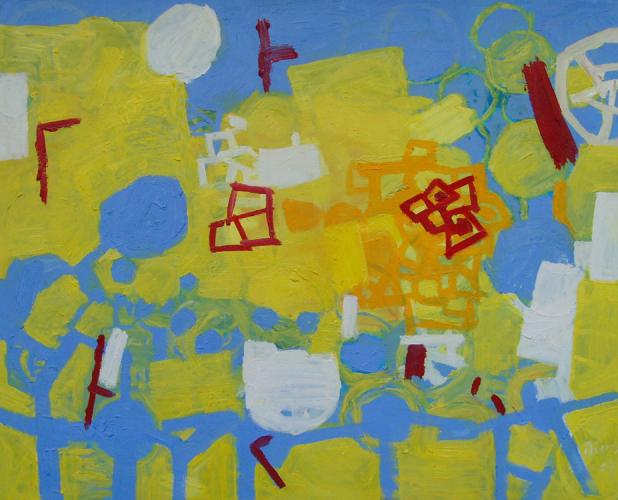
Cecile Navarre
Voilà autre chose. Voilà Diers. Son monde en huis clos, ses étranges juxtapositions, ses façons et ses silences, ses couleurs comme des arrières saisons. Un monde au goût de cendres et de miel, de printemps et de déjeuner nonchalant en plein vent du nord, qui fait claquer le linge sur un fil. Diers est généreux : il nous dispense d’avoir vu pour nous montrer. Il nous donne ses fragiles instants innocents et mystérieux. Il nous apprend à veiller sur la grâce des choses, la douceur des choses. Son jaune comme un grand soleil, saturé de lumière, comme dérobé au paysage, sa modernité folle, son histoire, son allure, la vie qui passe, son immédiateté, ses nuages, ses totems, ses violons qui sinuent dans nos oreilles, cette rumeur qui remonte si l’on s’approche des toiles, enfin ses chuchotements puis ses silences. Diers est emporté, ivre et dansant. Il est à la lisière entre deux mondes, le sien et le nôtre. Le sien, la lumière sur la lumière. Le nôtre, le vacarme dans les hirondelles. Deux mondes, donc que Diers fait se superposer pour créer comme un nouveau registre de peinture. Il expose alors des fragments de sa vie douce ou contrariée par mouvements, sans céder à la paresse des émotions. Il avance en quête de lui-même, et tout le reste autour. Et toujours, lointain mais toujours, un léger sourire. Et c’est irrésistible.
Une bonne raison d’entrer dans sa danse.
Céline Navarre, Paris- 2009

Aliette Finance
Thierry peint les formes qui le visitent, il peint pour les poser, simplement, inlassablement, pour leur donner un lieu de vie, sans pour autant les achever. Parce que l’inachèvement sied mieux à la recherche, il est plus juste par rapport au monde, l’inachèvement.
Thierry peint des cycles, des cycles de formes, qui cherchent leur mouvement. Et il en fait son miel, sa gelée d’huile à lui. Ses figures, même identifiables, sont autant elles-mêmes, une ou plusieurs silhouettes, un décor, un miroir, que leur autre, abstrait. Ses traits sont une liaison constante entre ce que l’on voit, ce que l’on connaît, les choses concrètes ; et l’abstrait vers lequel tend la peinture, inévitablement.
Ainsi, quand Thierry peint la femme, il peint la féminité, quand il peint une cravate, il peint l’oppression, quand il peint un miroir, il peint le narcissisme, ou l’oubli. Ou, parce que Thierry ne peint pas ces choses pour les forcer dans la conscience du spectateur ; ou, parce qu’il y a toujours de l’écart entre une chose et sa signification et qu’importent les limites. Elles sont là, mais elles ne sont pas ultimes, elles sont limites par procuration, limites d’un instant, jusqu’à l’autre, qui va peut-être les polliniser.
La peinture de Thierry n’est pas une peinture de certitudes, elle est aussi rouge et inquiète que celle de ses maîtres du Nord, avec lesquels il dialogue, il cite, il joue, il butine. Munch et Malevitch. Il dit aussi qu’il cherche le Sud – Thierry n’a pas peur des contradictions – qu’il cherche le soleil, la musique, et il peint le jazz dans un éclatement fluorescent, il tue le spleen avec du rose, du jaune, tant de jaune, encore et encore.
Les toiles de Thierry sont grandes, il lui faut de l’espace, pas question de confiner les abeilles, c’est un lâcher d’insectes sur des mètres et des mètres, Thierry les regarde s’envoler en même temps qu’il les peint. Ses grandes toiles, dans lesquelles s’est inscrit un mouvement, ça bouge là-dedans, ça fourmille d’idées, même quand les ruches semblent en sommeil, même quand les signes viennent à manquer.
Les ruches ne sont jamais seules. Ça n’aurait pas de sens, une ruche seule. Elles sont toujours regroupées, organisées, afin que les abeilles puissent y circuler en liberté. Sur ce modèle, Thierry apiculteur prend soin de chaque idée avec la même ardeur, il multiplie les croquis, les dessins, les lavis, les toiles. Il sait que le miel est le produit de chaque coup de pinceau, de chaque tentative, de chaque bruissement d’ailes de ses abeilles, butineuses comme faux -bourdon.
Dans une ruche, ça bourdonne, une ruche c’est le mouvement démultiplié d’abeilles volantes, c’est le flou de toutes ces petites ailes qui bruissent. Les toiles de Thierry Diers ont comme les ruches du vol et des signes partout, elles sont une recherche, un butinement qui n’a pas de fin.
Thierry n’aime pas la fin.
La fin de la forme, de la couleur, la fin du son.
Il montre avec liberté un monde d’émotions.
Aliette FINANCE, Dublin- 2005

Alain Daill
Depuis 30 ans Thierry Diers peint avec la vitale énergie des hommes du Nord. Sur cette terre sans fin, sous un ciel que l’on croit vide quand soudain les nuages révèlent les énigmes, s’il peint pour combler les absences immédiates des choses, jamais il ne cessa de regarder le monde comme il le devinait, enfant, au travers de la vitre de sa Flandre natale. Quelles que furent les différentes directions qu’emprunta son travail, il revint à une certaine figuration il y a une dizaine d’années, l’architecte qu’il demeure s’est toujours imposé des règles et des codes pour mieux capter le mouvement. Pour mieux cerner les émotions. La série de toiles, - réalisée pour le Festival -, exposée à la galerie du Monde à l’Envers, témoigne de cette quête. Jazz et peinture. L’éveil des sens. Insatiable recherche du son juste, du moment unique, de la perfection inaccessible d’un côté, de l’autre, le geste absolu qui jaillit avec la fulgurance d’un poème. Les portraits et les corps des musiciens de Thierry Diers s’évaporent et surgit l’invisible. Des notes virevoltent dans le sang du décor comme des flocons noirs. Le pianiste se courbe sur l’instrument. Dans cette tension, le clavier blanc s’élève. Il s’y colle. Il s’y cloue. On tourne autour du corps sombre du chanteur aspiré dans un muet triomphe. L’homme est seul. La musique est un combat qui le désarticule. On pense à Claude Nougaro.
Marciac, Août 2004
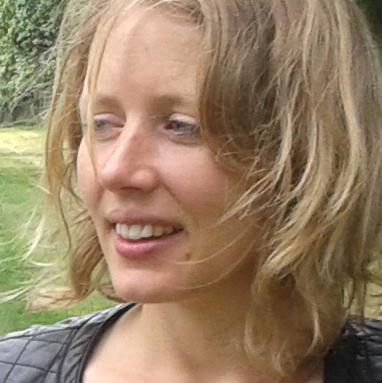
Camille D
Thierry DIERS proposes us several paintings and drawings on the theme of jazz music, on athmosphere that fascinates him and to whom he feels close.
Jazz and paintings are two arts, two senses aroused, and yet one single base, the constant search of “the good sound, the unique moment, the perfect instant...”
Jazz and paintings live, evolve, they are changing. The first one, on stage, is far from the plain rendering. The other one, away from eyes, is not a simple copie of reality. Both exist out of fashions, out of codes, out of periods.
Timeless, they are free.
No right or bad answer, they only are attempts.
No certainty, but the need to create by love of unexpected, for the emotion to come...
All along the exhibition, Thierry DIERS shows the power and the magic of jazz, emphasizing the intensity of the link between the musician and its instrument, and also accentuating “the fantastic harmony” between the spirits, the hands and the sound.
He makes us penetrate the deep sphere of jazzman which reminds us that of the painter in front of his canvas, switching from excitement to suffering, construction to destruction, a fight between fear of emptiness and fear of excess.
Thus, when Thierry DIERS paints a jazzman, he might be revealing a part of himself although ignoring it or without admitting it...
Camille D
May 2004- Marciac
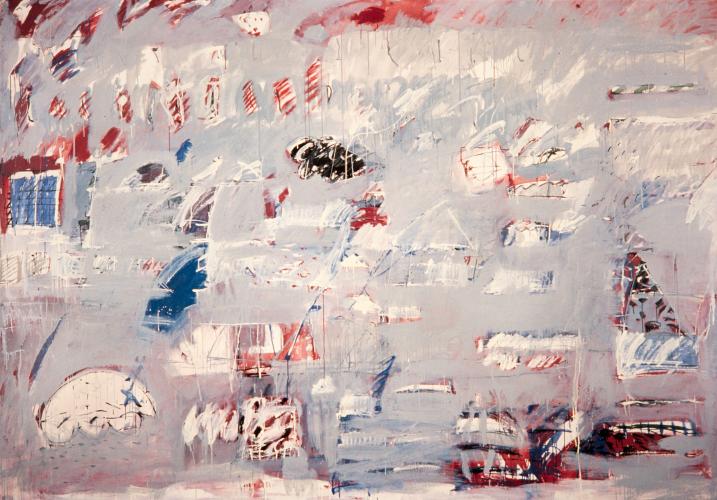
/
/
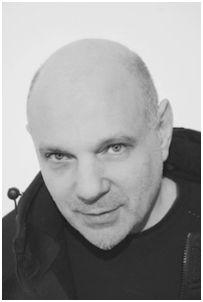
Alin Avila
In Egypt,
In 1992, he met the dumb and swarming world of signs. He has understood, in front of the hieroglyphs : - words or painting ? – that the painter does surely belong to this silent and lively universe, which unites and links together the eye and the senses, everyman’s destiny.
Spirituality is not a theoretical question and painting, while it is lived out as an asceticism opened on the world, is undoubtedly the most living message that the mind addresses to the spirit.
And signs are men, characters who are released from the weight of time.
And the world in its marks is a crowd of men at a standstill whose age-old presence offers itself for an encounter.
It is not a crowd of dead people but a multitude of presences that reveal themselves questioning the one who - the inquiring mind - going towards them, is discovering himself.

Maria Besson
La possibilité de se perdre ? Le désir de se trouver ? L’ Au-delà de ce qui le hante et le travaille, consciemment ou inconsciemment, de l’amalgame de ses passés, de ses fantasmes, de ses angoisses, et de ses rêves, Diers atteindra-t-il l’universel ? Nous touchera-t-il ? Thierry Diers reste à la surface de la toile, à naviguer sur ses flots blancs sans y plonger car ainsi, pense-t-il, Il exprimera l’inaccessibilité des choses.
Fidèle à un cadre, maniant diverses formes géométriques, il impose des règles et des codes à son imaginaire. Mais cela ne l’empêche pas de passer de l’autre côté du miroir. Thierry se poste devant le lac gelé de la toile. Presque furieux, il cherche à la “salir”, à “l’occuper” : la “posséder”. Et c’est elle qui le “prend”. Elle acquiert sa propre vie. Le pinceau soudain libéré se met à peindre des grilles, des barreaux, des quadrillages, des spirales, des cercles noirs, des marches, des escaliers, des échelles instables, tordues, et bientôt des poings levés, des bras tendus, en colère ou désespérés, des mains paumes ouvertes comme se rendant, implorant grâce, des yeux sombres qui trouent l’espace, des silhouettes fantomatiques qui courent comme pour échapper au regard… Puis, quand la toile trouve son propre équilibre, tout s’arrête et le peintre baisse le bras qui tenait le pinceau. Thierry regarde sa peinture. Interdit, inquiet, parfois défensif. Il se détend pourtant et souriant, il l’interprète : grille de ma pensée, reflet d’une enfance heureuse, bras protecteurs, gestes d’amour, grands-parents accueillant petits-enfants sur un quai de gare…
Ces gestes ne sont pas des appels désespérés ; ils signifient, « je t’aime”. C’est un message positif, chaleureux.“ À travers la peinture, je restitue tout ce que j’ai pu recevoir. Amour, valeurs, famille… Je laisse un témoignage pour mes enfants. Le passé est espérance et le futur mémoire.”
Voilà qu’il cherche à passer pour un peintre “superficiel”. Pourtant, malgré lui, la toile l’a aspiré et laisse transparaître l’envers du décor. L’amour ? Il est représenté dans toute sa dualité, sa cruauté, inséparable de l’instinct de mort et de destruction : Eros et Thanatos. L’homme ? Dans sa fragilité, son impuissance face aux forces brutes de la nature et de la technologie qui l’écrasent et le dominent. Il n’est qu’une ombre. Le temps ? Dans l’inéluctabilité de sa fuite ; parfois, l’artiste arrive à capturer la fugacité d’un “moment parfait”, ces secondes de cristallisation qui justifient et nous arrachent de notre condition dans le monde… Les tableaux s’inondent de lumière. Les couleurs se font vives, gaies, fraîches. Les traits semblent spontanés. C’est l’innocence et la magie de l’enfance retrouvée. Mais le perpétuel présent de ces re-créations n’empêche ni la vieillesse, ni la déchéance, ni la mort. Brouillard, grisaille, tâtonnement, l’univers des toiles redevient opaque. Seuls le traversent quelques signes : instruments de géomètre ou d’architecte, capables de mesurer l’espace, de donner forme au monde… ; ils ne sont signes que d’ambiguïté.
La peinture de Thierry Diers est originale et forte. C’est une peinture ouverte. Étrangement, malgré tout ce qui la marque et la déchire, elle est loin d’être pessimiste. Elle porte en elle une géologie et une mythologie personnelle qu’on aspire à explorer. Espace de dialogue entre pensée consciente et inconsciente, elle reflète dans leur mouvance les débats intérieurs souvent douloureux de l’artiste. Elle crie le droit de mener une autre vie que celle rangée et droite que les générations antérieures ont tracée pour lui. Thierry Diers, malgré ses efforts pour se réduire à une unité, est double. Comme nous tous. Et le portrait de lui-même qu’il trace à travers sa peinture n’en est que plus poignant. Car c’est le nôtre.
Maria Besson, Deauville- 1999

Claude Levy
Je regarde sa peinture, un ou deux tableaux, pas plus, et j’essaie de retrouver les mots de ceux qui, à tel ou tel vernissage, cherchant désespérément à trouver une figure, un message, un sens à ces formes bizarres, les mots de ceux et celles qui voulaient avoir compris quelque chose s’étonnaient de ne rien y voir de connu. Ou plutôt si, des taches de couleurs, des gribouillis d’enfants, des arbres, des hommes qui marchent, des bras qui se tendent, des chaises qui ne verront jamais personne s’asseoir… Ce sont souvent ceux qui ne comprennent pas qui me rendent à la réalité vivante, qui me révèlent à mes impressions trop rapides, à mes intuitions trop évidentes. Que l’on ne comprenne pas ce que Diers veuille représenter, au fond, ce n’est pas si risible, si choquant, si attristant, c’est finalement bon signe. En tout cas, ce n’est peut-être pas vraiment surprenant. Si ces grandes toiles disent des choses que l’on ne comprend pas toujours, c’est qu’en dépit des apparences, elles ont comme lui quelque chose d’absent, de caché, quelque chose de profondément discret, quelque chose qui s’avance avec la plus grande pudeur.
Je pense à Thierry Diers. Je suis intrigué par les peintres.
Que voient-ils ? Comment voient-ils ?… Quand je pense à Thierry Diers, à son visage solaire, à ses yeux bleus toujours à l’affût de nouvelles questions, à sa silhouette imposante, à son rire si attirant, me vient immédiatement à l’esprit le souvenir des ciels des Flandres. Sur cette côte, la terre devient comme étrangère à elle-même, elle est si définitivement plate qu’elle disparaît presque par la présence d’un ciel immense toujours changeant qui fait porter très loin notre regard. De toutes parts, les espaces s’ouvrent vers le grand lointain, devant nous vers la mer du Nord grise, verte ou bleue selon les heures du jour, derrière nous, au-delà des frênes et des peupliers vers les plaines verdoyantes. De tous côtés les limites sont repoussées, partout la lumière gagne, l’épaisseur du ciel provoque ici comme une sorte de vertige à l’envers tant nous sommes attirés par le vide d’en haut. Diers a dû fouler les bords de la mer du Nord, surtout lorsque la plage est déserte et que la mer s’est retirée très loin de la dune. Les impressions de l’enfance restent à jamais fixées dans nos mémoires, c’est à ce moment qu’en jouant avec le clignement des yeux nous apprenons à distinguer les nuances de couleurs, c’est là que se forme le cadre de notre imaginaire.
Une enfance côtière est marquée par un “là-bas” sans fin. La distance, c’est son élément, aucune distance ne l’arrête. Lorsqu’il veut voir quelque chose, toute sa force, sa volonté, toute son énergie le conduisent, sans effort apparent, vers son but, où qu’il soit. Diers n’est pas facile à soumettre, à freiner, ou pire, à diriger. Il est comme un cheval qui se serait dressé pour se faire plus coriace, plus courageux que sa vraie nature et dont il serait lui-même le cavalier.
Il n’est pas surprenant qu’il se soit senti si près de lui-même en Mongolie. Les récits qu’il m’en a faits et les images qu’il en a rapportées le replacent bien dans son univers : omniprésence des chevaux sauvages, liberté infinie sur les vastes étendues désertiques, larges vallées où courent sans se précipiter des rivières aux mille bras, jeux parfois terrifiants de la lumière dans le ciel, voix fortes et joyeuses des hommes sous les yourtes enfumées se régalant de lait de jument et de viandes bouillies. Les espaces, la lumière qui vit dans ces espaces, c’est sans doute l’essentiel de ce que voit Diers dans ce monde. Tout ce qui fait obstacle à cette course peut le rendre malheureux. Non pas qu’il cherche à s’accomplir dans un état de parfaite extase, de tranquille harmonie. À le regarder vivre, son idéal d’équilibre ne passe pas par la fixité mais, au contraire, par le mouvement, par la succession des actions, par la puissance de la vie.
Rarement enclin aux démonstrations d’émotions, aux marques trop visibles de ses coups de colère ou de ses coups de tendresse, il ne traduit pas autrement que par un rire enivrant et protecteur tout ce qui peut le toucher : l’injustice, la bêtise, la séparation, la mort, la beauté des enfants, les envies, les projets. Rire qui conjure la peur, rire qui annonce la présence de la vie, rire réjouissant de la création renouvelée, rire qui doute, aussi, peut-être. Mais y a-t-il mieux à faire que rire ? Il ne sait pas. Il peint.
Claude Levy, Soisy sous Montmorency- 1999
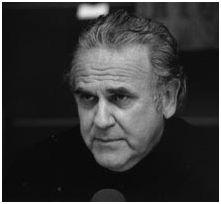
Raoul Hébréard
Nous étions aux antipodes l’un de l’autre. Thierry venait du Nord et j’arrivais du Sud, il revendiquait l’acte total de peindre, j’allais l’abandonner pour explorer d’autres domaines. Il pratiquait en solitaire, je travaillais en groupe et, pourtant, il y eut de suite dans cette rencontre le souffle de l’amitié. Nous avions les mêmes perceptions artistiques, nous utilisions des mots semblables pour désigner nos préférences, et de plus nous partagions le même goût pour la musique et le design.
Je suis un amoureux des contrastes, des dualités, car souvent, derrière ce qui nous apparaît comme des évidences, se cachent des secrets et des éléments mystérieux qui vont à l’essentiel. Dès les premières perceptions de sa peinture, j’avais l’impression que je venais de faire la connaissance d’un artiste méditerranéen, comme moi. Ce qui me faisait avoir cette fausse certitude, c’était bien sûr sa façon de travailler, car sa peinture provoque une sensation presque “italienne”. En effet, quelques couleurs simples et éclatantes posées naturellement sur la toile à grands coups de pinceaux, larges et rageurs, avec des jus très dilués, nous proposaient des formes simples pour des histoires simples, sans artifice ou concession.
Figures géométriques ou organiques, personnages, silhouettes, chemins… Cette peinture se nourrit de sa propre histoire, elle dispose de tout un répertoire de formes qui façonnent les lettres d’un alphabet pour des mots à dire…
Mais ces sensations se sont rapidement évanouies, car cette simplicité portait en elle trop de non-dits apparents pour ne pas m’intriguer. J’avais à faire non pas au Méditerranéen auquel je pensais, mais bel et bien à un artiste portant en lui toute la retenue et l’intériorité des gens du Nord. Et c’est avec une curiosité accrue que je m’interrogeais sur cette qualité de travail. Dans ce terrain de contraste que nous donne à voir Thierry, si l’on gratte un peu, il y a tout de suite, planquée derrière cette luminosité, cette économie de moyens, comme une apparition de dangers telluriques.
Ils sont révélés par des couleurs sourdes et profondes. L’obscur vient manger la lumière et se tient bien au chaud au plus profond de la toile. Les strates de peinture que l’on ne devine pas tout de suite sous cette fausse non-épaisseur nous arrivent d’un seul coup en pleine figure, et le Nord nous transperce le corps sans prévenir.
C’est curieux car cette peinture, qui, au premier contact touche à la transparence, se métamorphose sans crier gare en la plus épaisse et la plus intime des picturalités, comme si l’artiste nous propose de découvrir-là, une âme contemporaine qui rejoint les plus glorieux de ses aînés, Franz Hals ou un Rubens, qui sous les charmes de la “flamboyance” savaient nous amener au plus profond des choses comme des alchimistes de l’âme.
Raoul Hébréard, Saint Raphael- 1998

Laurent Dominati
The signs indented on white pages, accumulated layers that are annihilating. Raw materials over raw materials, the forms that return from one painting to another places themselves along an autobiography in which only the author and the victim know the language. He must see the painting in the small hours of the morning; let himself be led to the workshop the same way as one would be led in a little garden, drawings of paradise which minimizes even the Persians. One must enter little by little in this landscape of canvas which draws a history, an internal architecture. The paintings of T.D. do not represent themselves, but himself.
From end to end, it is an autobiography; flipping through the pages you may find the living drawings of his history, his alphabet. The world is moving. Objects, animals flying in space, seized and refined in an instant. Each painting is a page from a book, quickly frozen, these violent objects gives the soul of a never-ending story. Gathered together, they would start moving like movie characters or cartoons.
One must photograph all these paintings painted over the years and make them into a notebook. One would read in it the unveiling of this infinite architecture, because each piece illustrates a sign that returns like an obsession onto another canvas caught a little further in space, in another position, in another dialogue with another sign, masked by another color.
The color of Thierry Diers, masked. Mask the objects, the signs of the first sketch, conceals the landscapes of the first hours in the exaltation of the first creation. The color refines. All the colors are rethought, repainted, reintegrated with black or white. This is how objects float with more spontaneity in space and can impose themselves. The materials (color, object, form) pose themselves on the emptiness. And I suspect that T.D. has a final ambition behind painting and freezing the emptiness. Soon you will see the elementary forms of geometry on his canvas, signs that come from animals: round, rectangular, square. However it is necessary to empty the mind before, decompose the natural forms and transform day after day, the gas of colors into their solid form and fix the whites of walls. This long process accomplishes itself by a sort of ascetic creativity. You see the fruit of reflection.
These canvases without titles (absence of speech, presence of signs, birth of an alphabet, of a personal geography), under construction (and disturbed by their work as if they were giving birth to the world), under-exposed, hollowed by the calling emptiness, erased by the appetite of the whiteness, reveal the daily work. From the paintings to the canvas which eats the wall to retrieve the scope of the epic, scope of the lost horizon because it is accumulated waves to the third dimension, that of the matter, we wait, after the architect and the painter, the sculpture. Here I wait for revolution (meaning the returning to its origin) of an artist and of art.
Laurent Dominati – Paris 1993
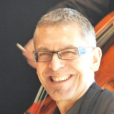
Jean Michel Bossini
The painting of Thierry Diers contains a paradox: his apparent spontaneity is the fruit of slow work and reflection. Isn’t a painter who gives an ear the same as a composer who elaborates out of time?
The painting, its music once interpreted, appears in the real time, like a living project, a “work in progress ? such that we have forgotten the first writing. Let us leave our vagrant imagination in the resonant image.
First of all, silence. This silence favors concentration, openness, discovery of the near future, around which it rise softly, very softly and slowly, a morning haze, gray, without form. The loose strings of double-bass and cello progressively overcomes space, stretching the sounds, barely stretching across the weave of the framework to be the joint with the altos that thickens the interior haze in fog, erasing the horizon between the sea and the sky, this fog that will avoid perspective, cancel the vanishing point and unsettle our perception.
Our blinding sight will multiply other senses, sense of smell, sense of touch…the melody appears slowly like a geometrical wave, the fog is more intense than ever, reinforced by the velvet of the violin, saturating space…we advance slowly, the heart pounding, and suddenly, round the bend appears ample, red. The strong melody of the trombones, trumpets colored by the piccolos-flute sustained by the tremolos of triangle, intense and violent, the revealed form.The sculpted objects, standing clear, whose contours fades into the white grayness of the canvas, like an iceberg, an inner style, the string of thought linking Matisse and the primitives of the Middle Ages, with infinite shades, upsetting/unsettling our balance and our vision of time and leaves us pondering.
As if we are waiting for hours on the beach near Dunkerque, lost in the smoked odor of the haze, mingling rock, boat and sand, the violent and proud venue of the tide.
Jean-Michel BOSSINI – Nice 1991
type-setter of music and performer

Daniel Dobbels
There would be a mute clause saying that a clever hand could slide, like an insertion, between the terms of sharing (which is no longer in the past). It stays just visible and will take infinite care of the surface of the painting, as well as the approach (always an uncertainty) of the painter. It would act on time, at the wanted moment, in order to precede our eager gaze and remediate its negligence. It could mingle with a fragmented glimmer – or a desire so ancient that trickles the metaphors of infancy, to be ready – blue perhaps, haunted by evidences that a color other than white would not know how to cover (but that it will continue to seek, between the cold and the blaze, to discovery). The clause would forbid a movement to stop, the eyes to close, the last word to be told. Clause opened, Thierry Diers then quickly detect and save, with the premonition in return that this clause would age the subject of the painting: the eve before every painting turns itself, not only to face it subject, (sufficiently indecisive and intact, and could suffer from it), but above all, to support the living print of the painting.The canvas of T.D. “comes from afar”. They do not have the arrogance to say it; only the proximity as if they were held back by a light discretion, allows itself to suggest that it comes from far. The forms (and the objects that seems to draw its secret), does not take the pressure away, but they internalize it, by seizing the initial detachment, lifting the pressure till the floating limit in which death has no access to.Movement stronger that a drift which goes back to its original backs detaches it and brings it out to the open sea to clear and set free…T.D. knows that his memoir has yet to come.
He knows that he cannot celebrate his paintings by radiating a past that will fix itself onto the false present. He needs to detax every form and every object he meets on the way that are illuminated between two clouds and allow them to build their own memories by being attentive to the gash of time — this unique cut-out will give (the painting) a name. To take out of bound the forms of his painting signifies for T.D. giving the forms back their original load and anticipate their real value. It is why that he can only act with the most extreme frankness, to present the sky at its closest…and he has to leave the scene, that is to say, to paint in pure loss, in the crack of time, which even he himself is not within. The painting of T.D. moves forward – without breaking the angles but not flattening them either to the point where his silence and his grand gesture, a sound could emit, from a bush or a desert zone (complex zone). A sound, a shrill voice, no a cry, not even a lovers’ breath, but a latent clause, his virtual revival. The paintings come forward board by board … and it is thanks to its possible deconstruction that a painting composes itself. The painting organizes itself, but as the force to quieten the force of order (too quickly uttered). The painting conjugates the arc and the boomerang, the smile and the freezing of the start. It seeks and finds the address. It is sufficient for us, today, to note down this in order not to forget.
Daniel DOBBELS – Paris, 1988
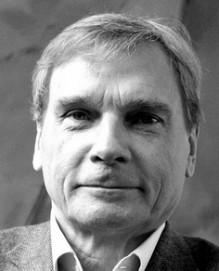
Jean-Luc Chalumeau
Take the paintings of Thierry Diers and they work with a sober elegance which combines symbols thrown in with authority and light colors placed in with care.
The symbols convey objects or events intimate to the painter and that the sole use of sight would not be able to pierce the senses:But whatever, it is the rhythm of the oppositions between happiness (the whole, the emptiness, the open and the closed) and colors.
A painting that holds the distance and at the same time gives birth to the desire to engage in a knowing dialogue: that is the fertile paradox which, I think, gives all the meaning to the painting of Thierry Diers.
Jean-Luc CHALUMEAU – Paris, 1988 - OPUS International, n°111- p 67
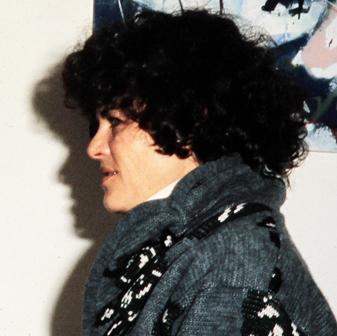
Sabine Puget
The source of the paintings of Thierry Diers seems to draw onto the landscapes in the state of perpetual flux. The representation of time lifts away for him in order to add and add over. Slashes and rips express the illegible script that preserves the nervous, rapid and hazardous stroke that you can find in the drips. They break the color, voluntarily cold, in order to play with the white of paper and the black of ink. One could not refrain from thinking of mural newspapers whose content gets lost in the collective memory to keep a form of anguish which soon gets covered to convey a new message.
Sabine Puget, Paris - 1985